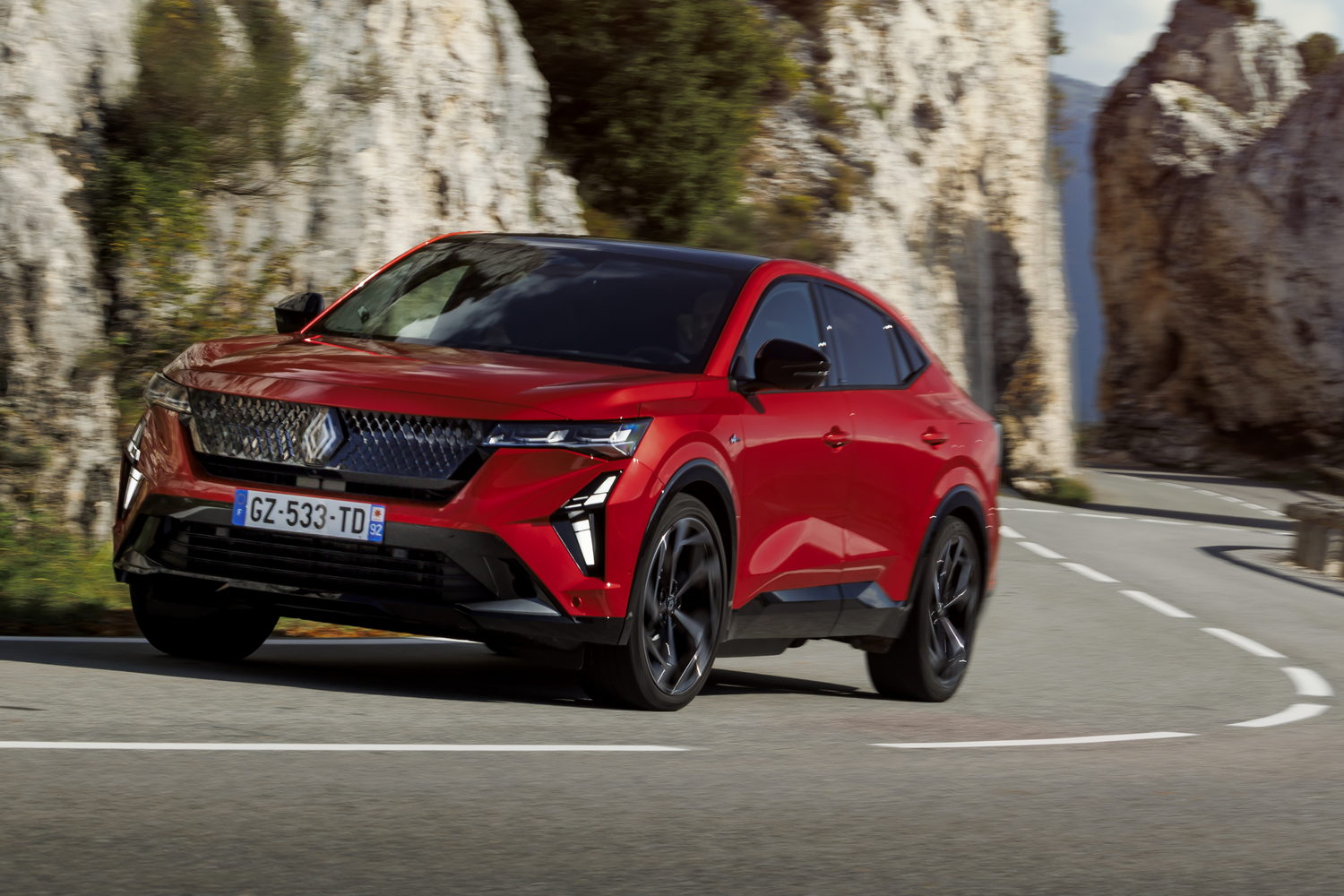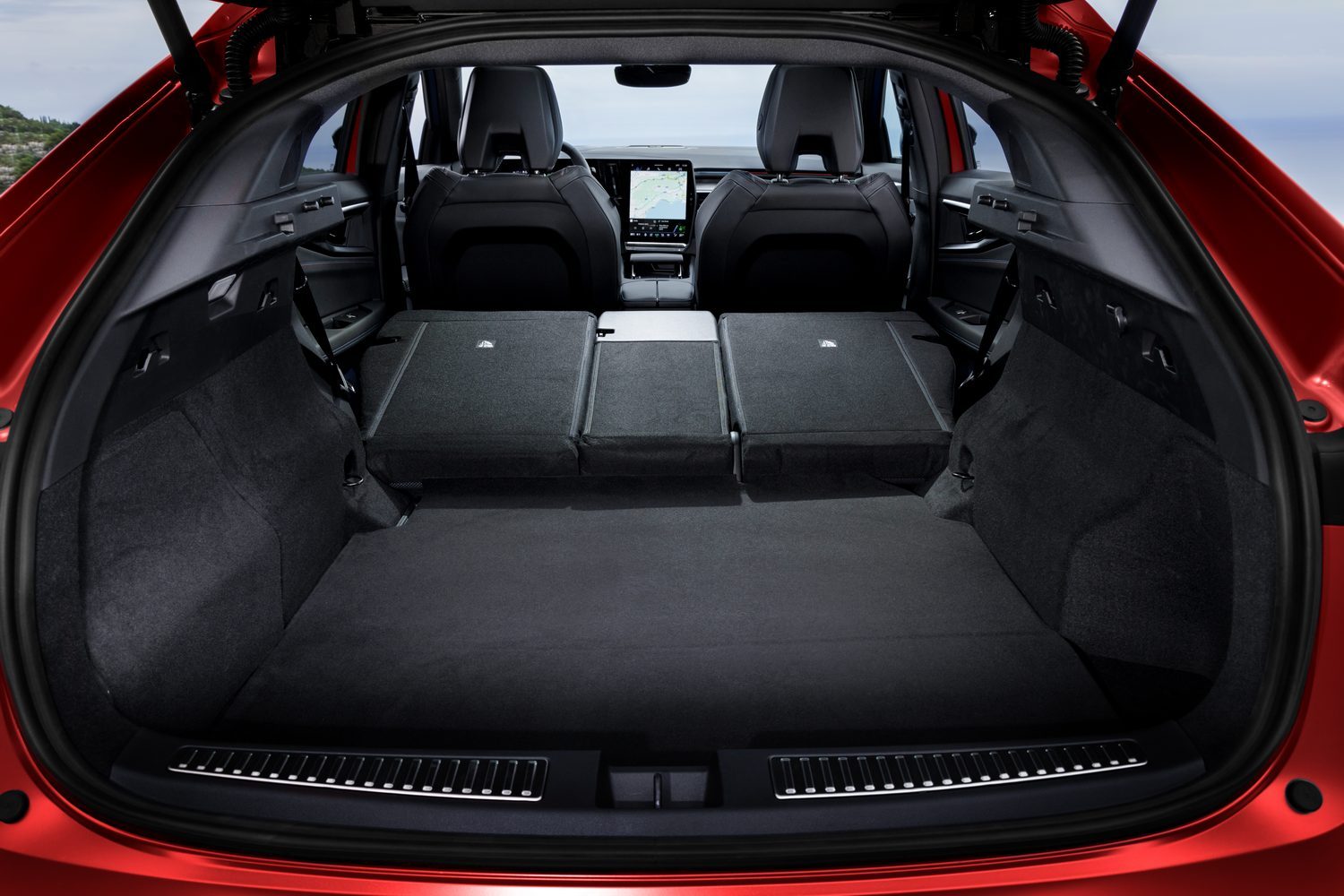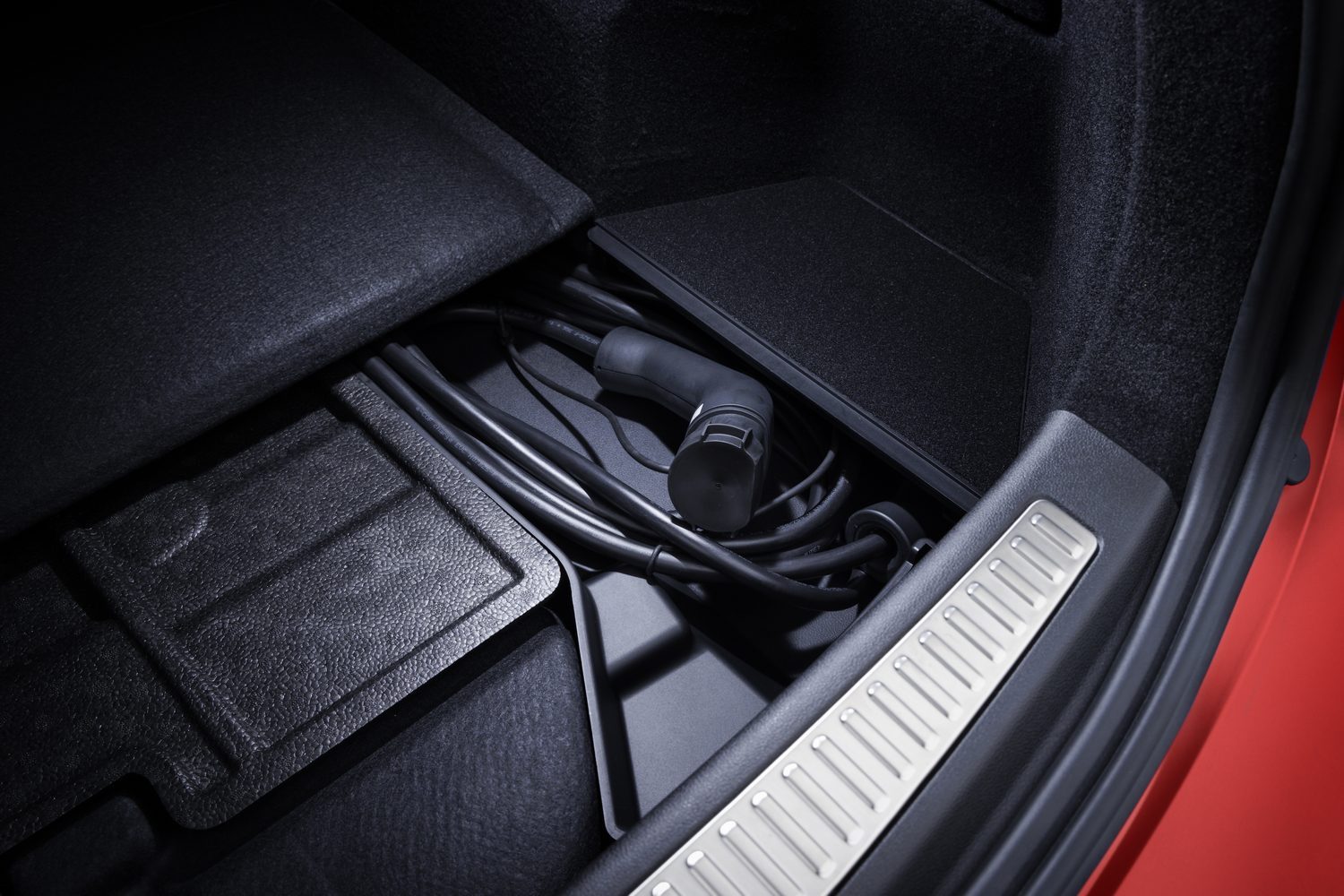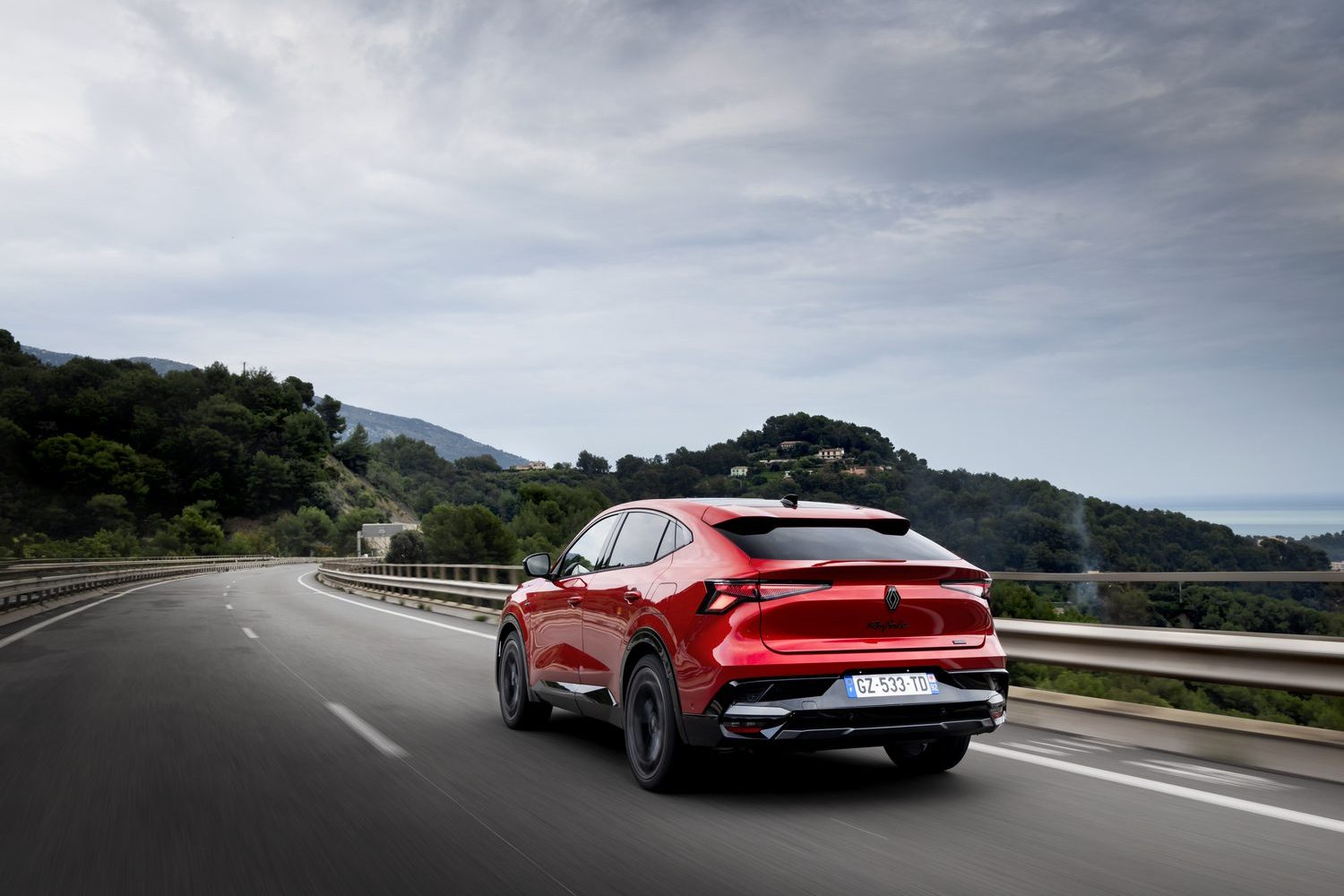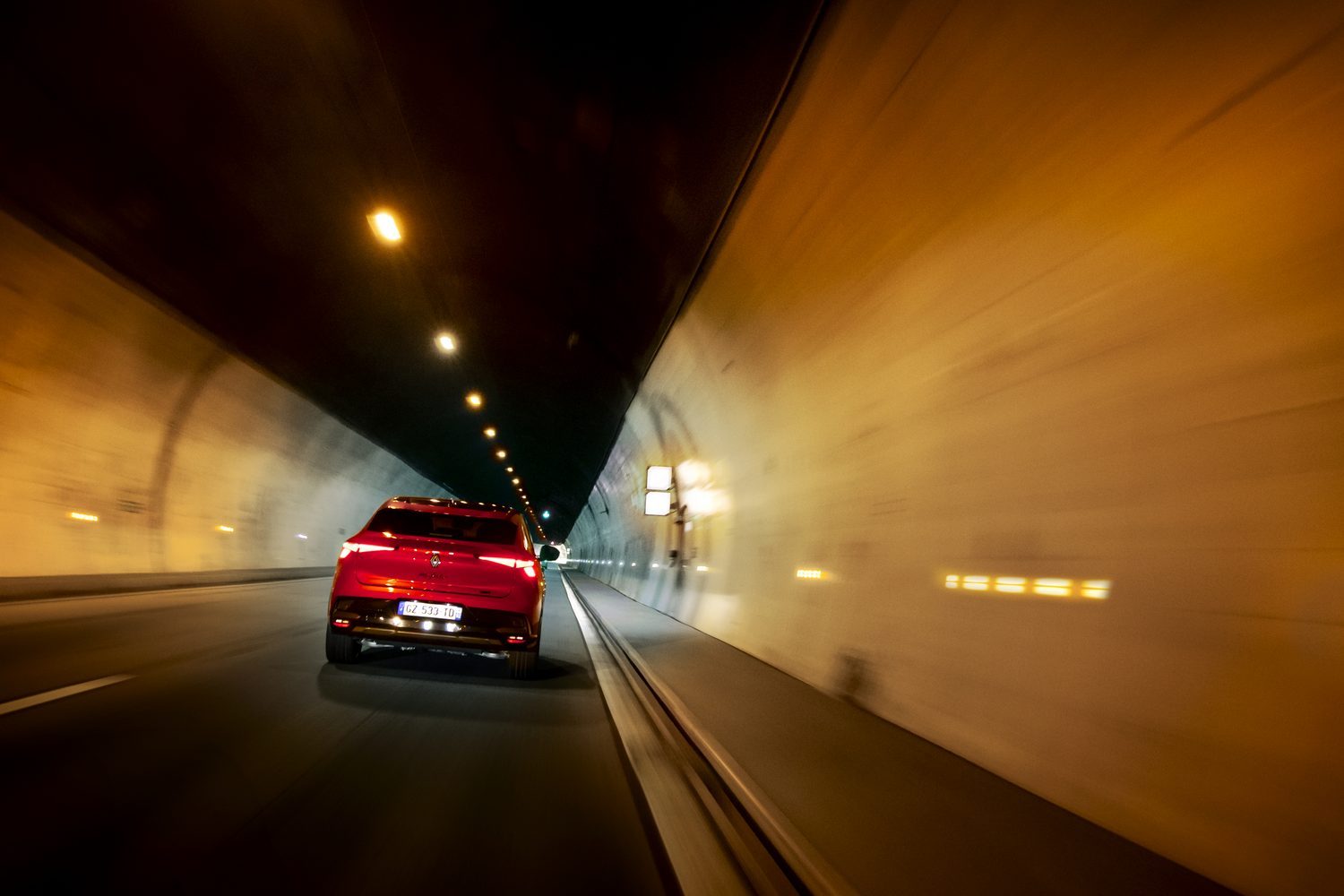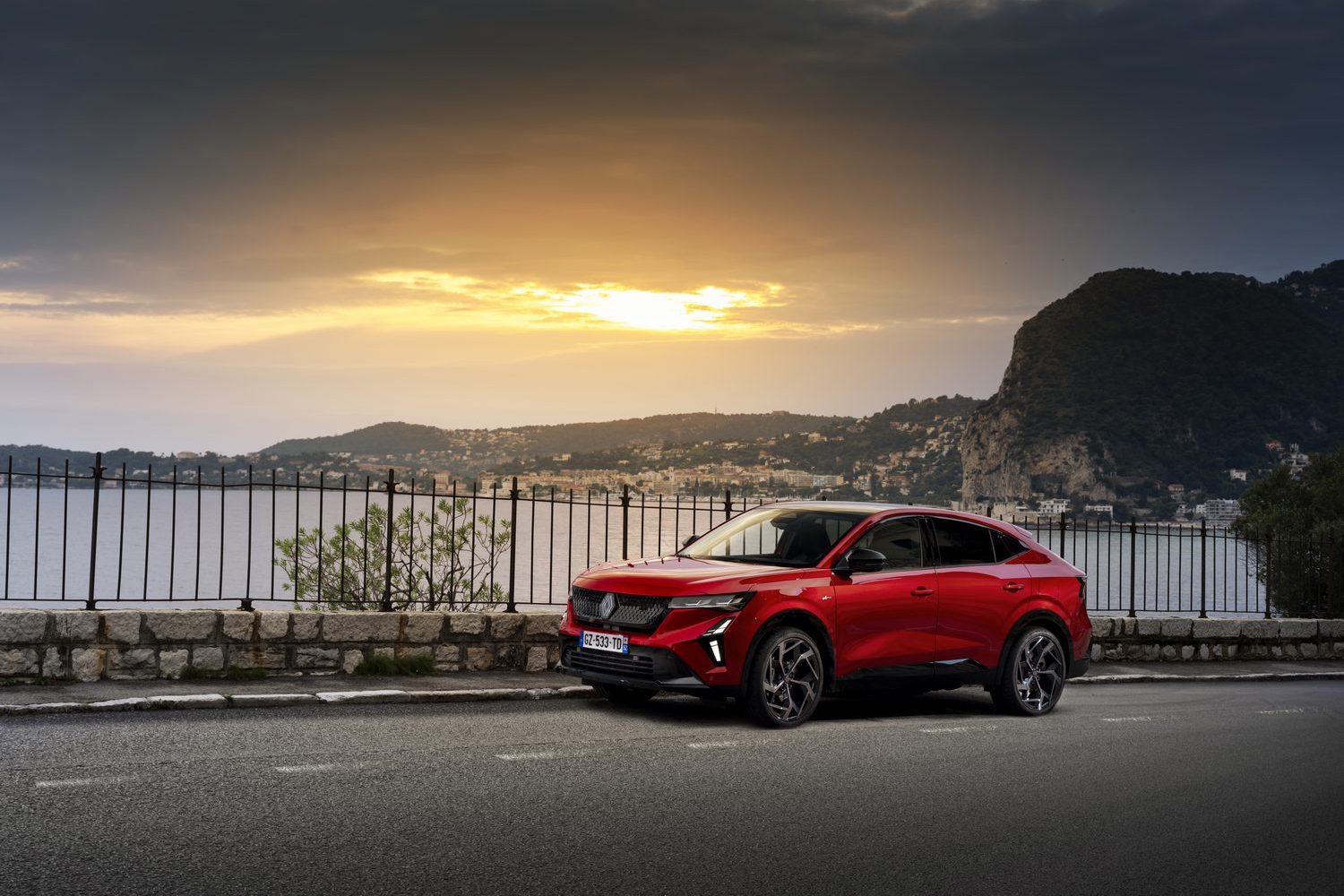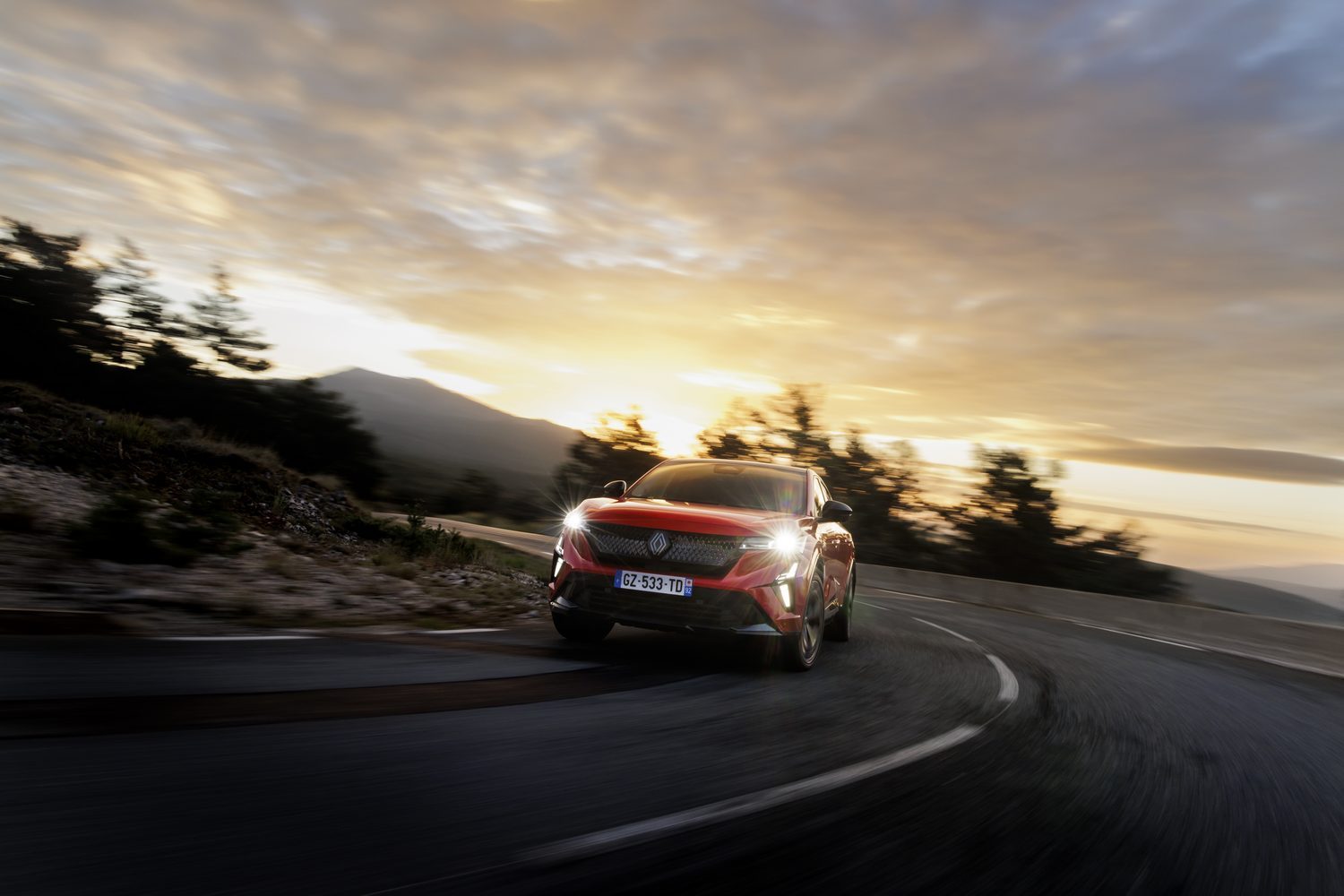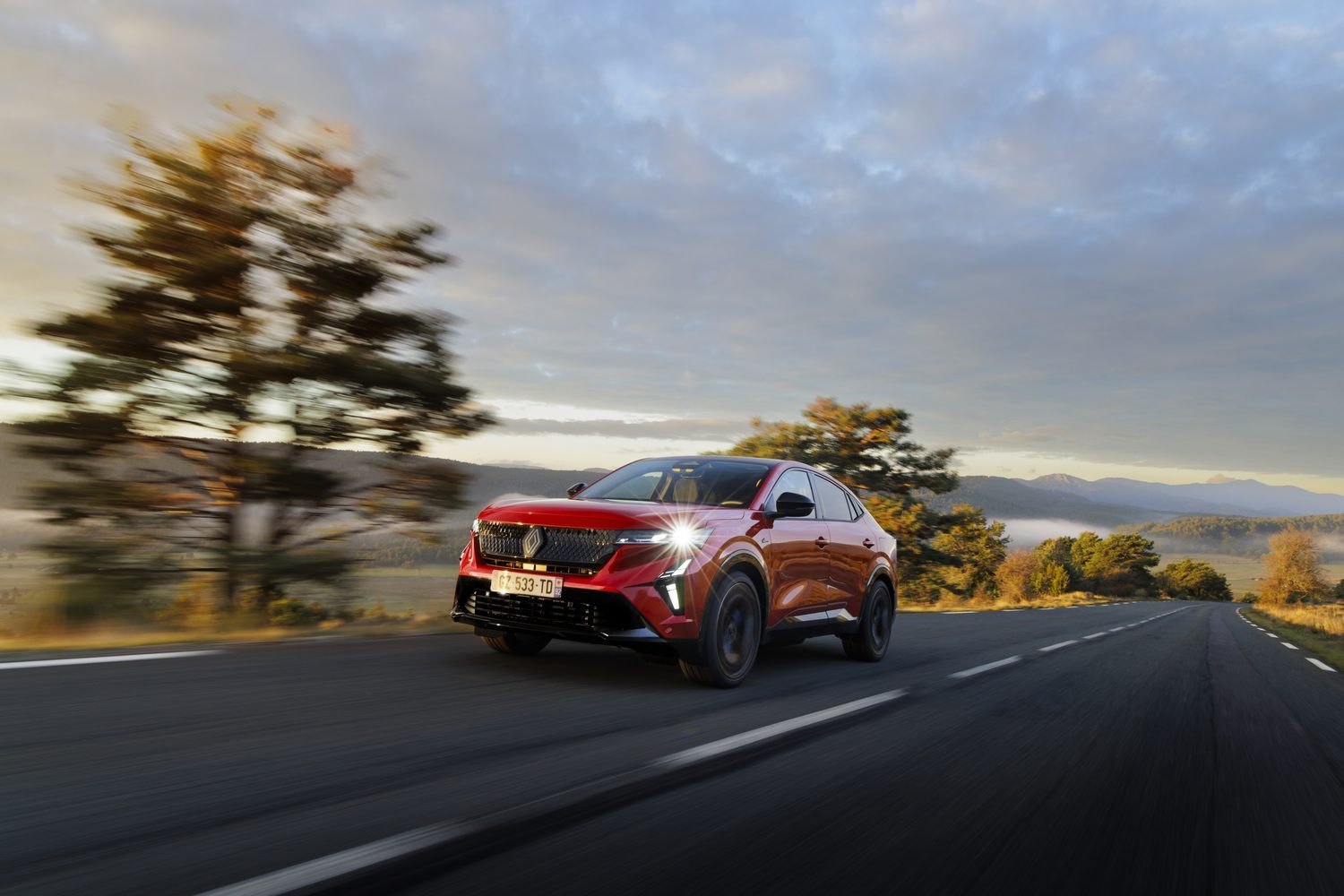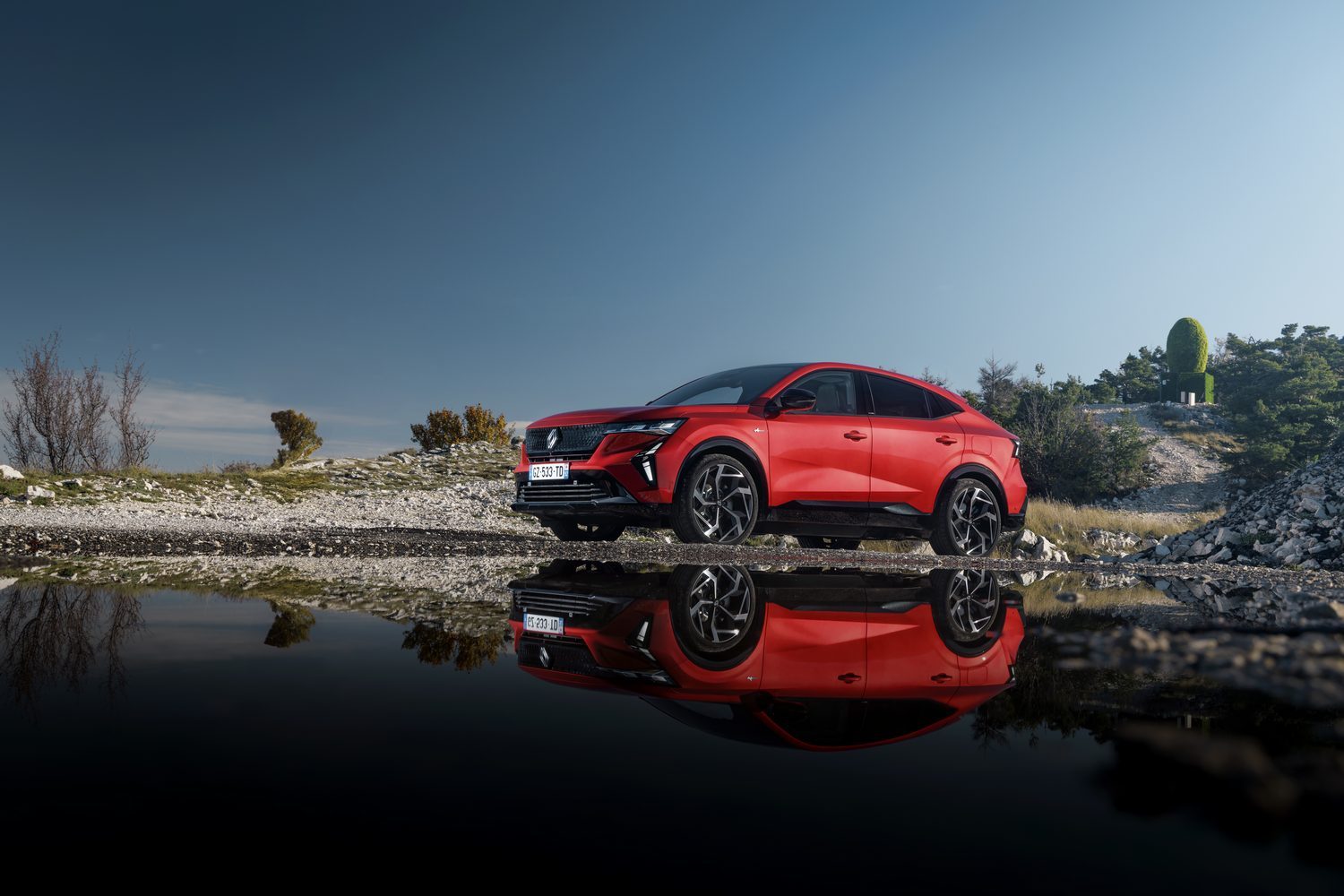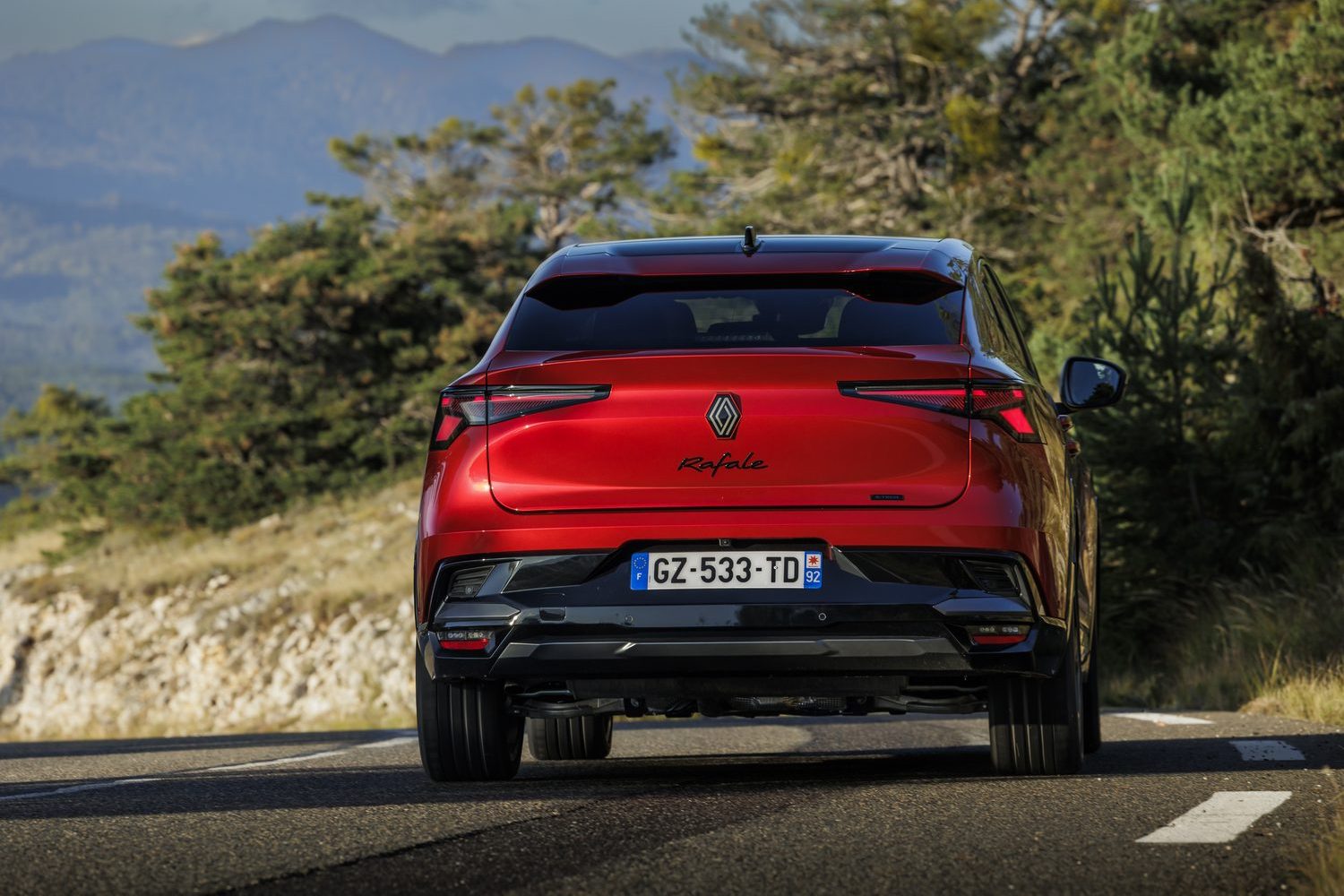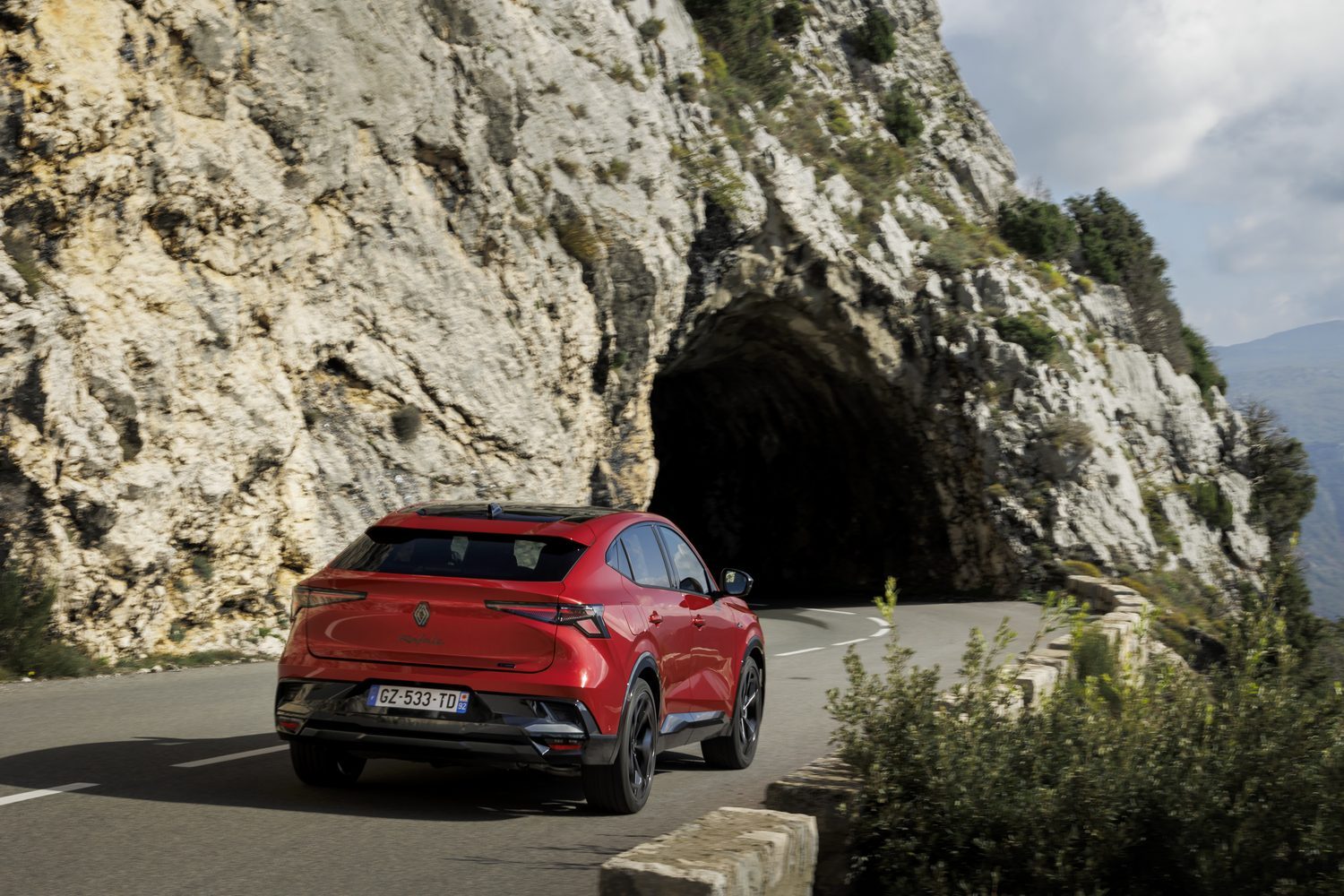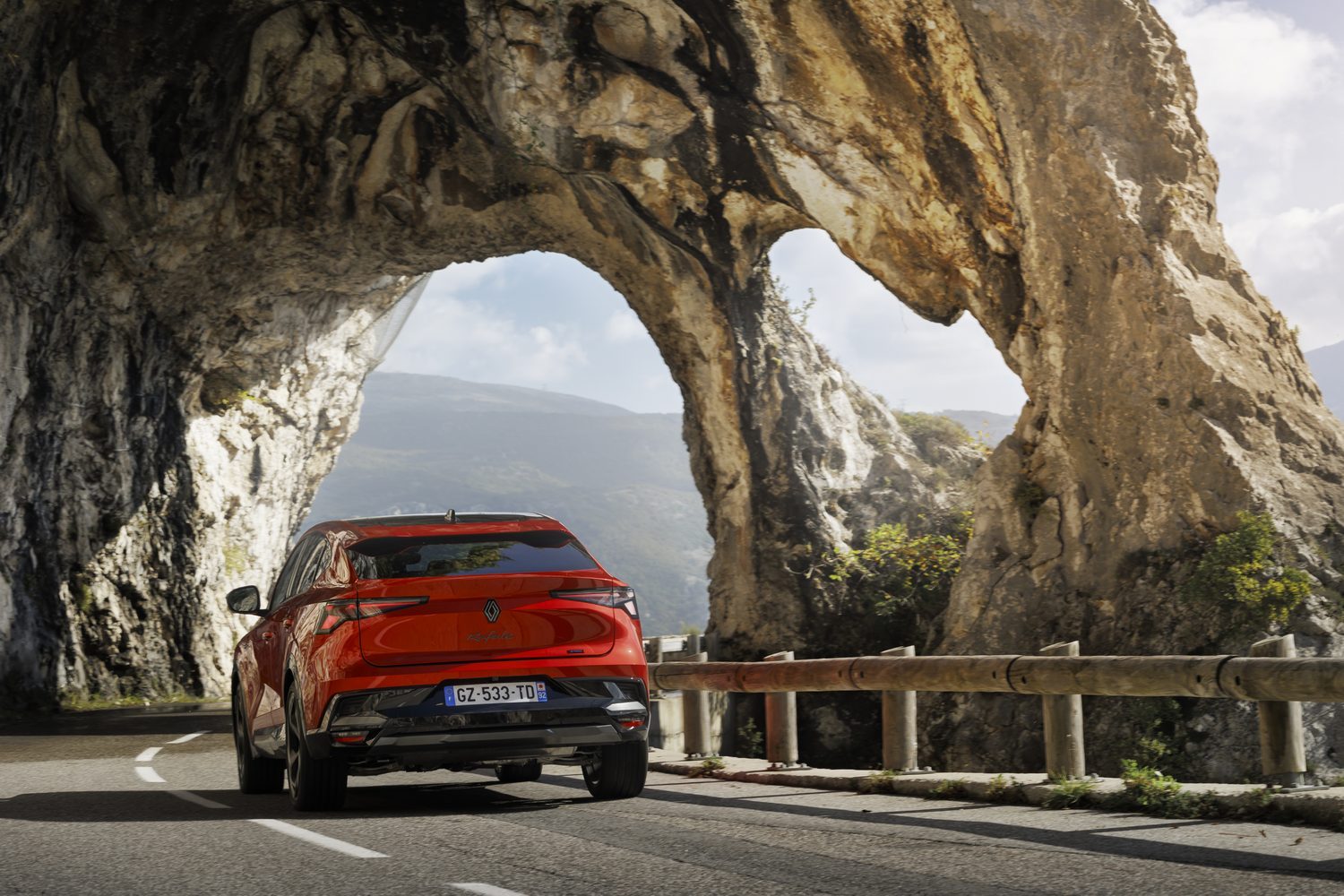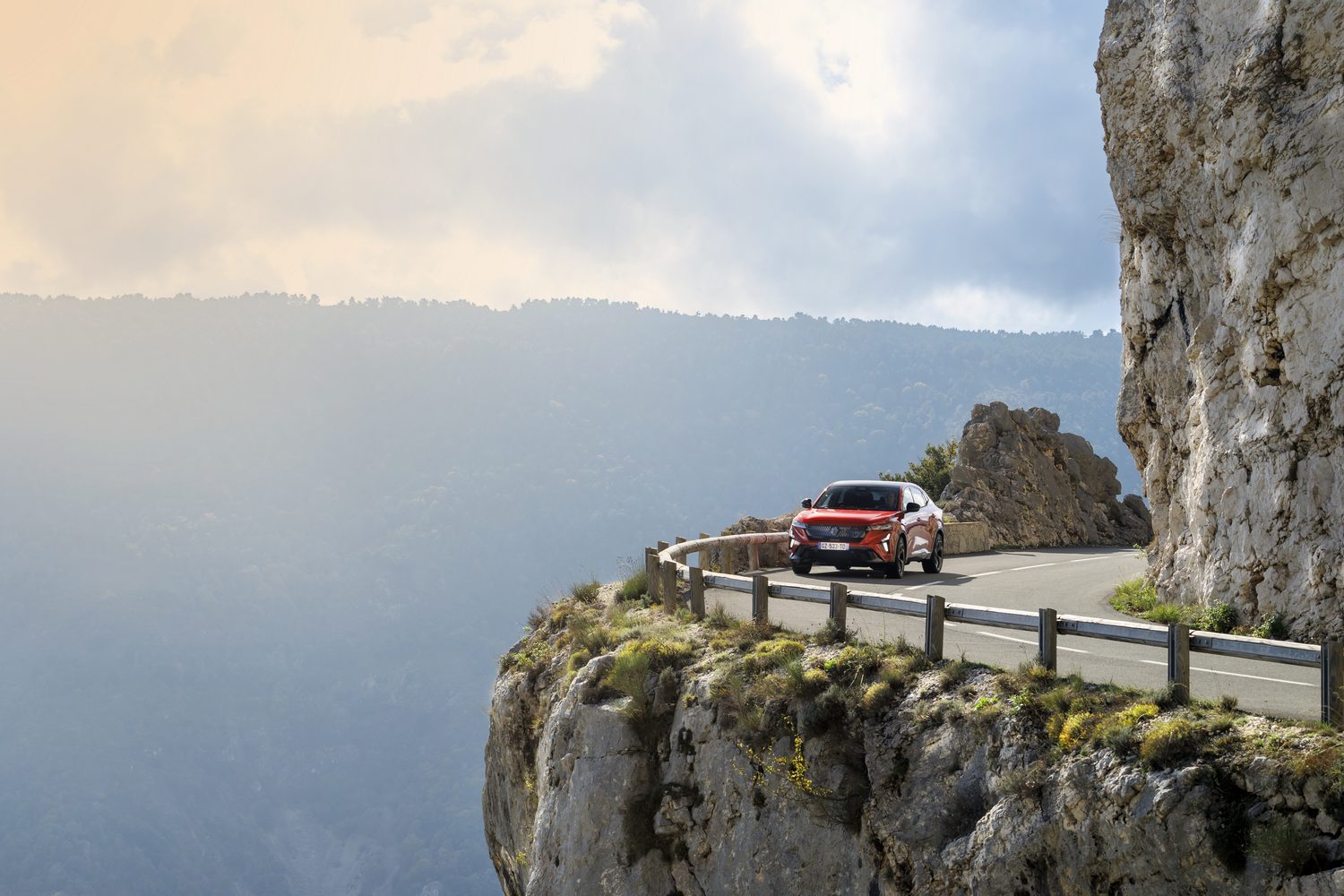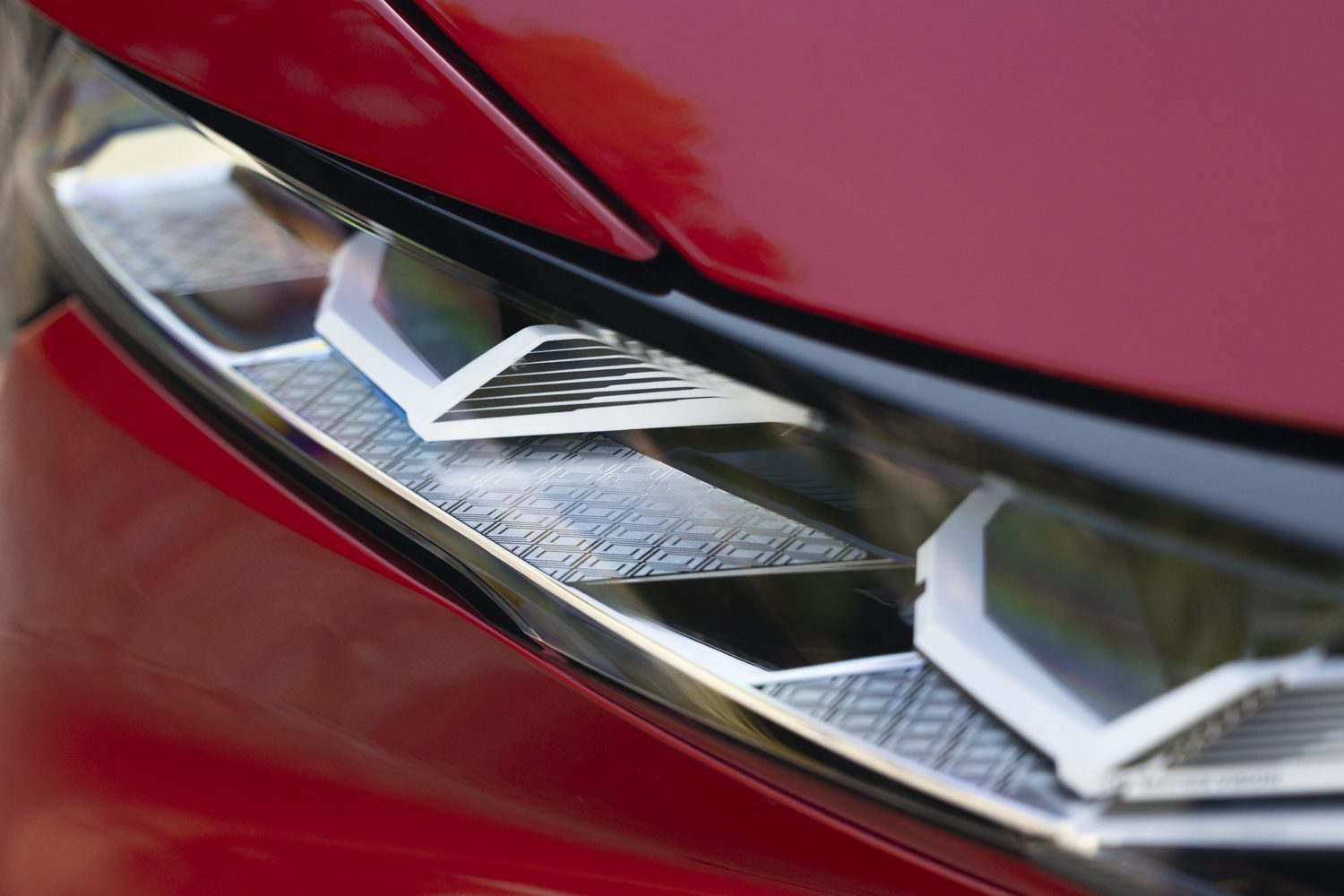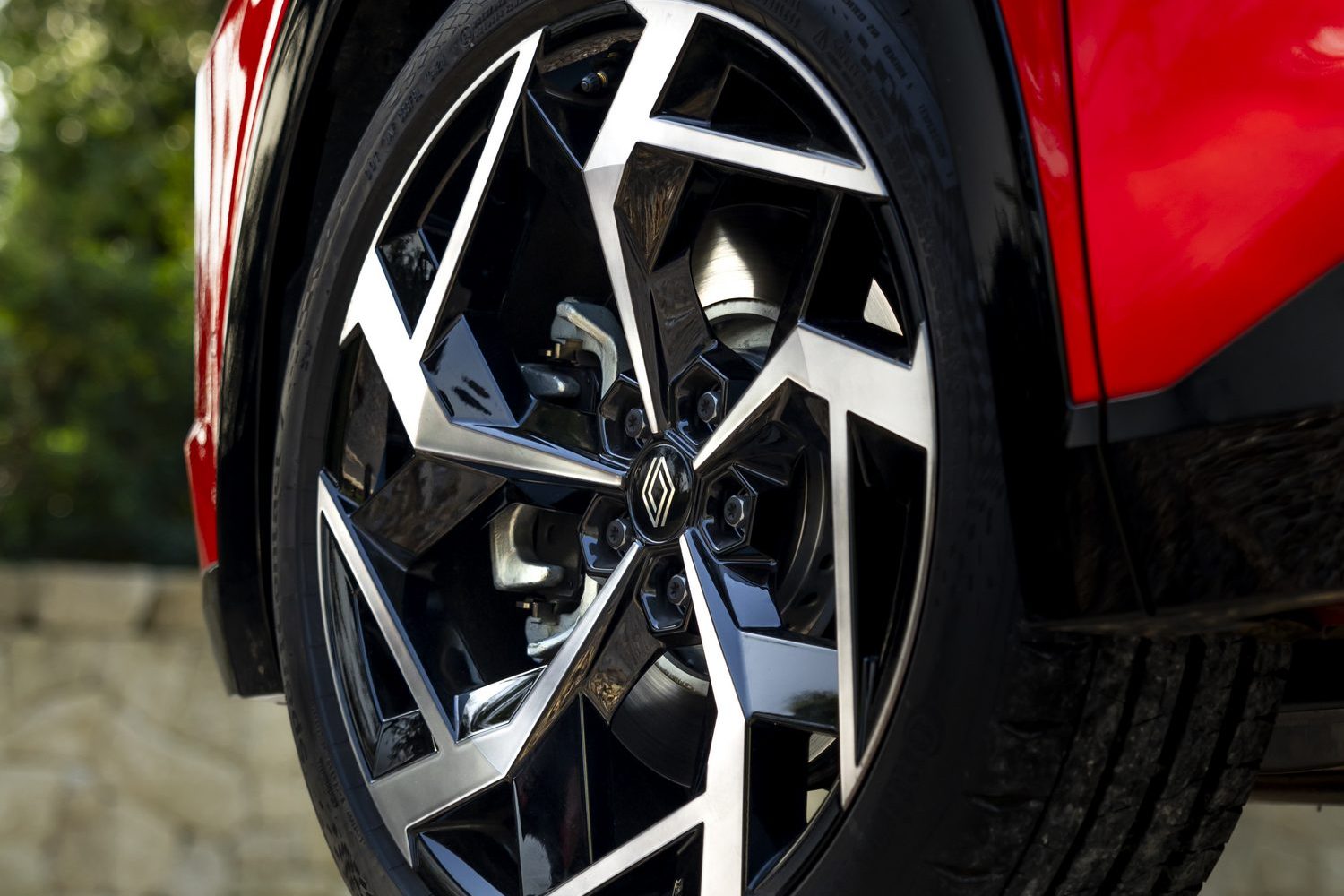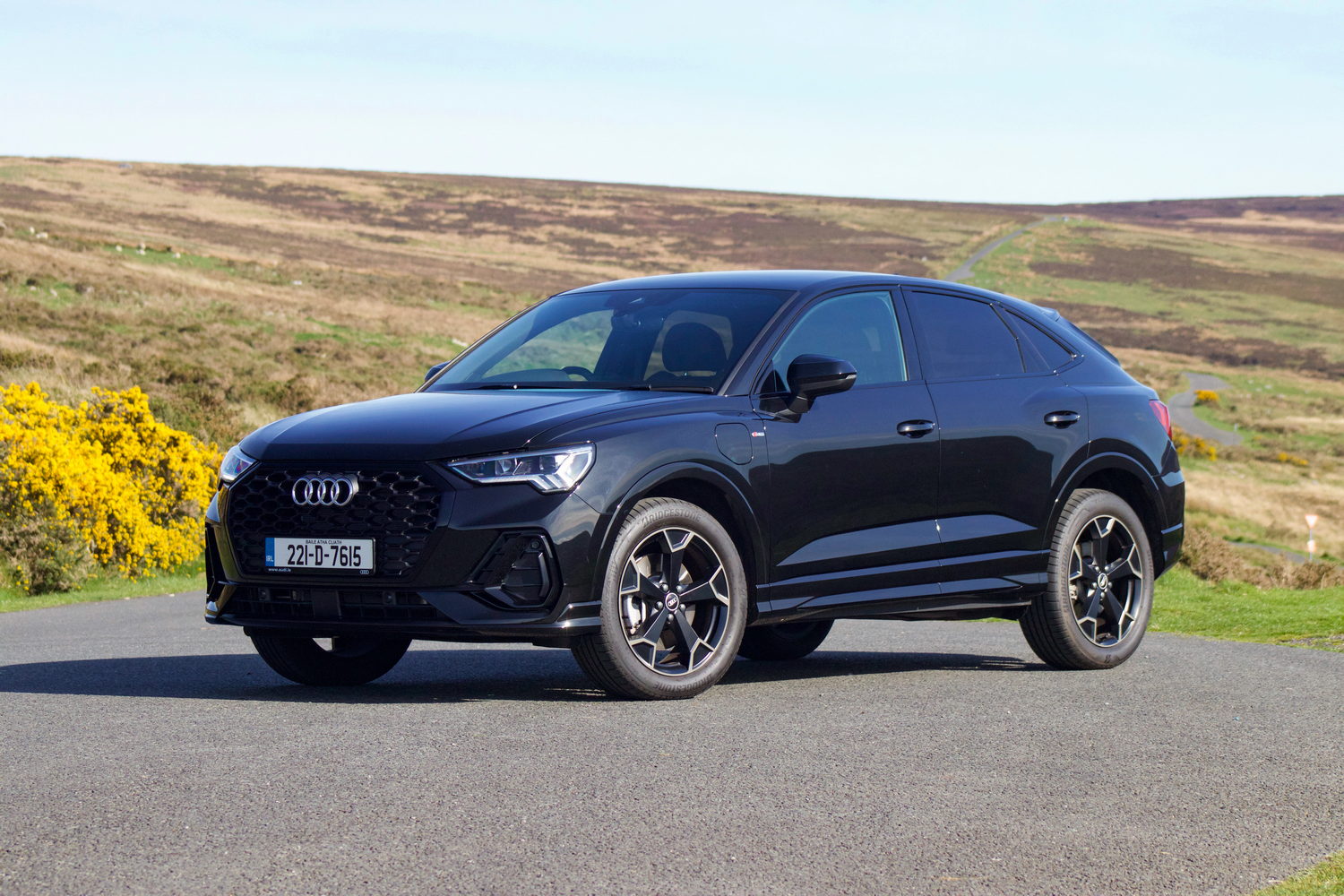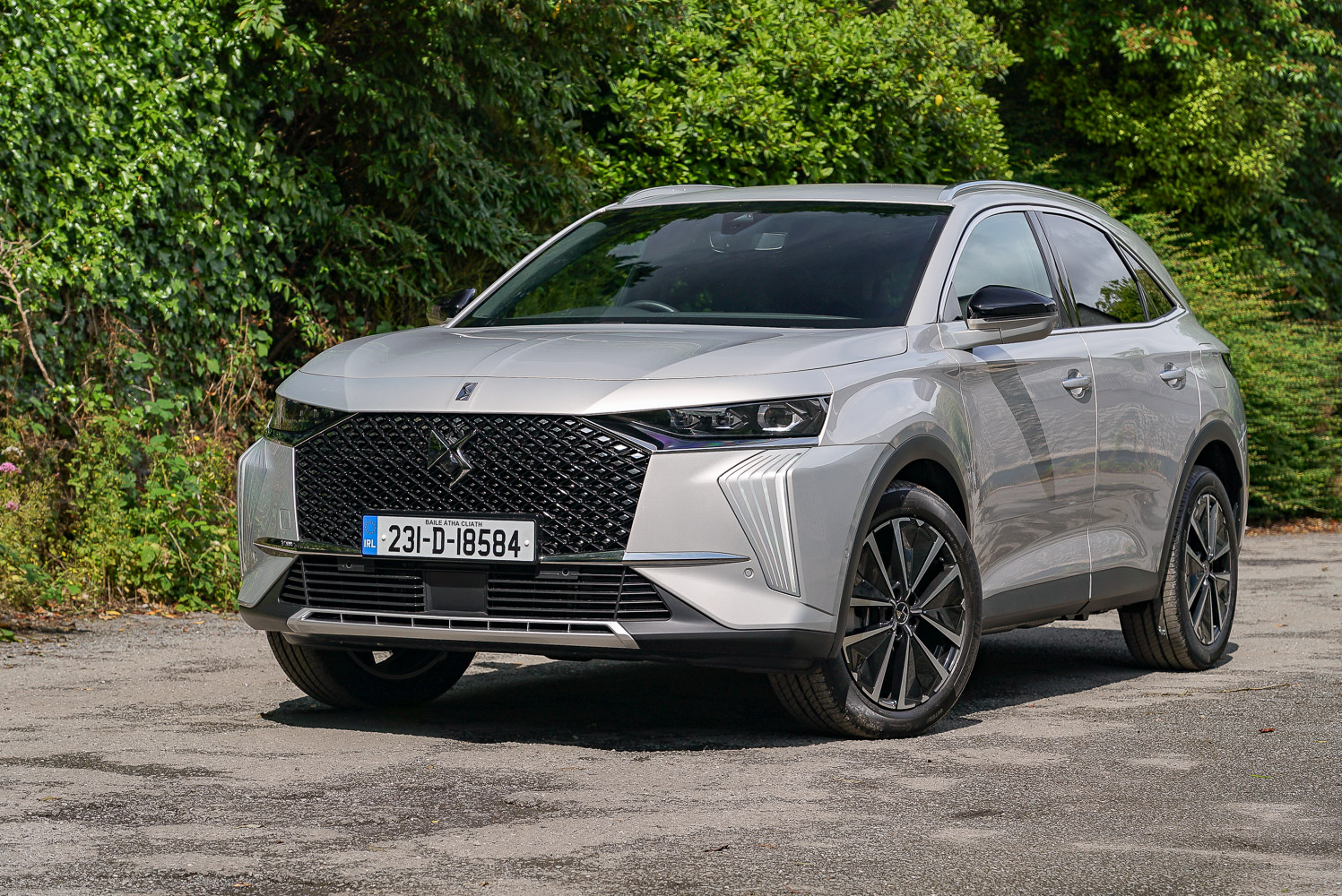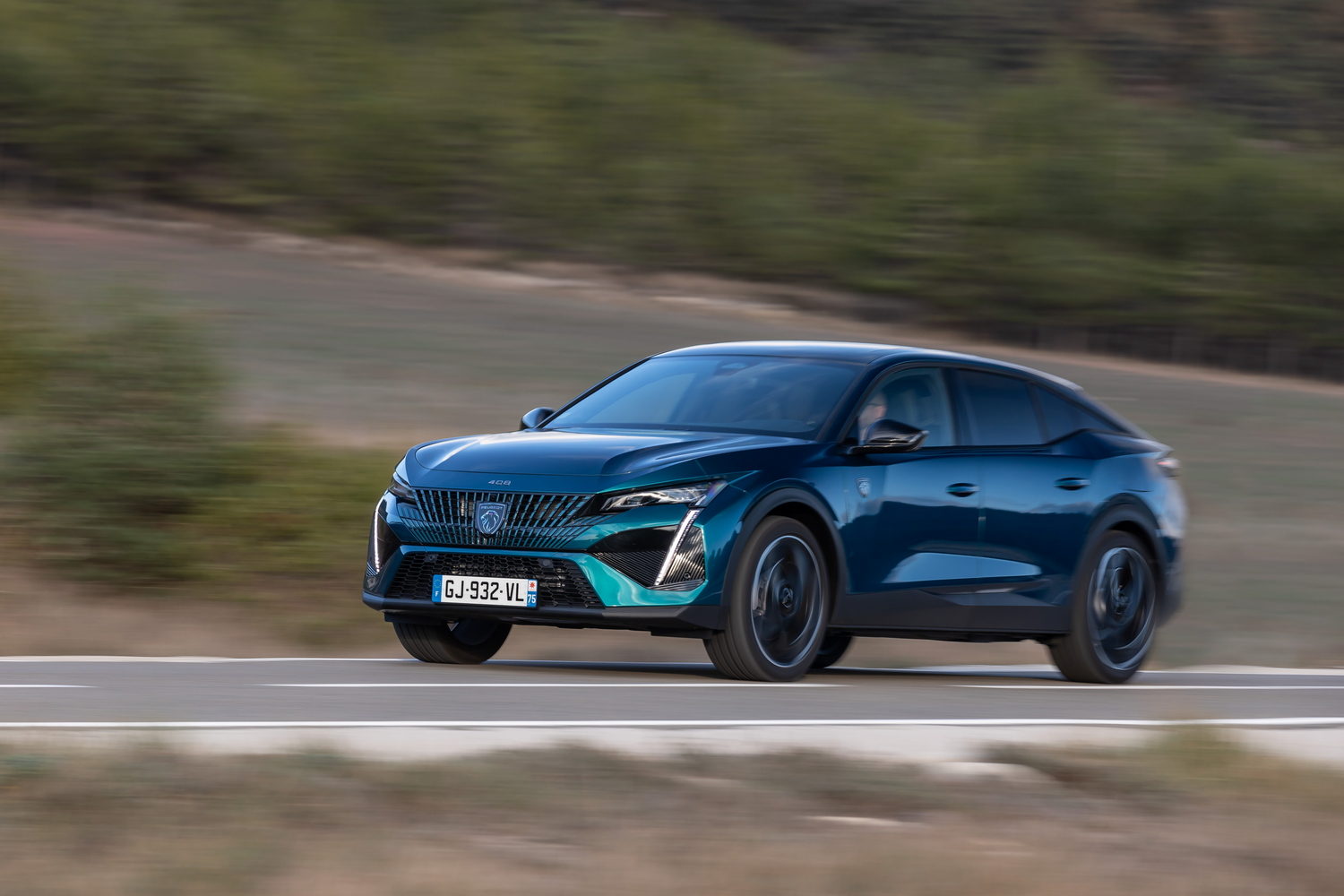The Renault Rafale wasn’t exactly a disappointment when it was launched, but it certainly felt like a bit of a missed opportunity in terms of living up to the standards set by the premium models with which Renault hoped to compete.
But the French company will be hoping the new plug-in hybrid version of the Rafale will prove more appealing to buyers in that space, providing more power and performance, as well as the option of clever suspension and some high-specification trim levels.
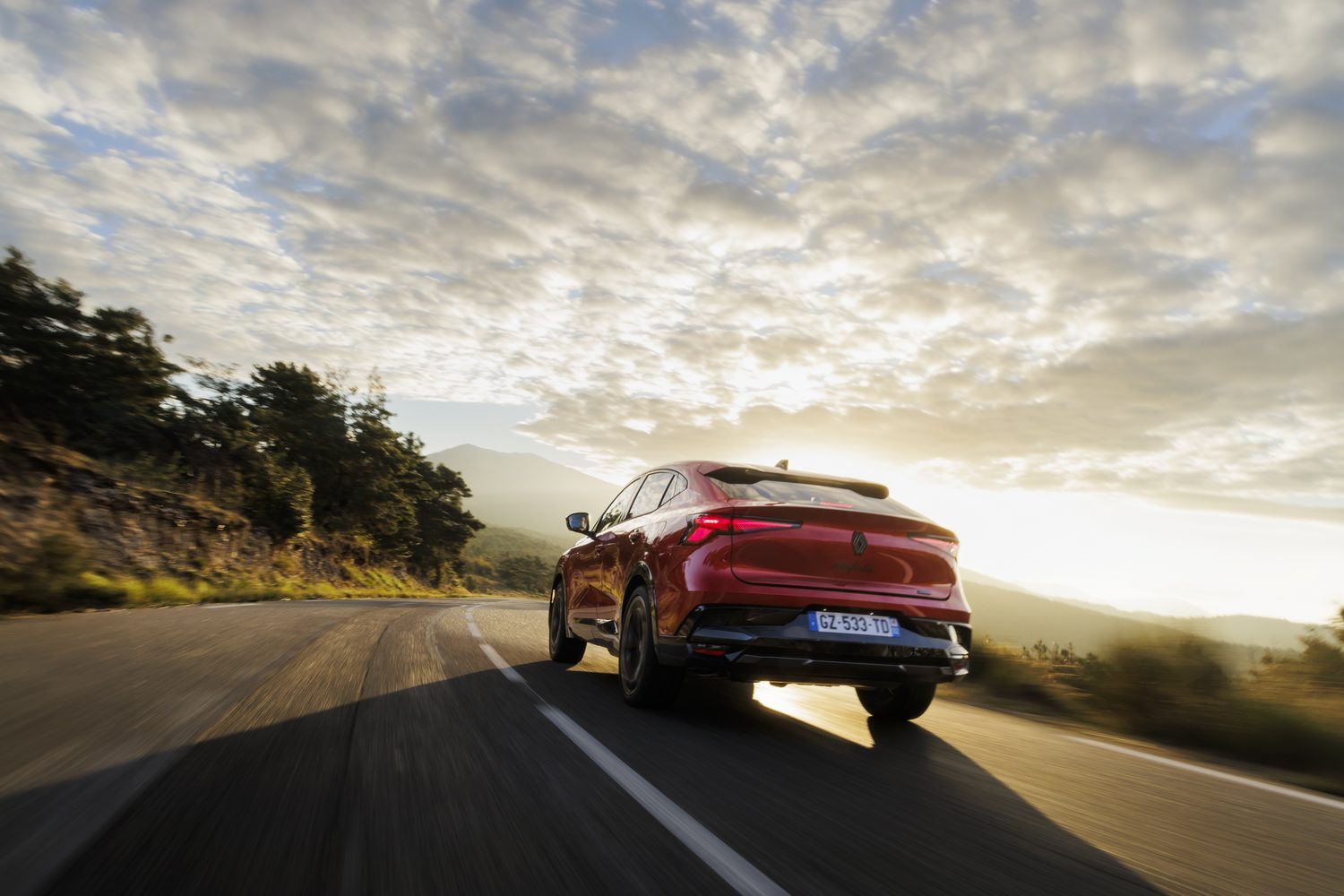
Our first drive of the less potent 200hp hybrid Rafale is already online, but this is the first time we’ve driven the more powerful plug-in hybrid, in range-topping Atelier Alpine form. Can a drive on the roads of Renault’s homeland see the flagship model prove convincing?
What does the new Renault Rafale E-Tech PHEV look like?
By and large, the plug-in hybrid Rafale PHEV looks identical to the 200hp hybrid version we tested earlier this year. There are one or two slight differences, but most of those pertain to the trim levels available (you can’t get a non-Alpine-branded plug-in Rafale), so it is quite difficult to tell the two models apart.
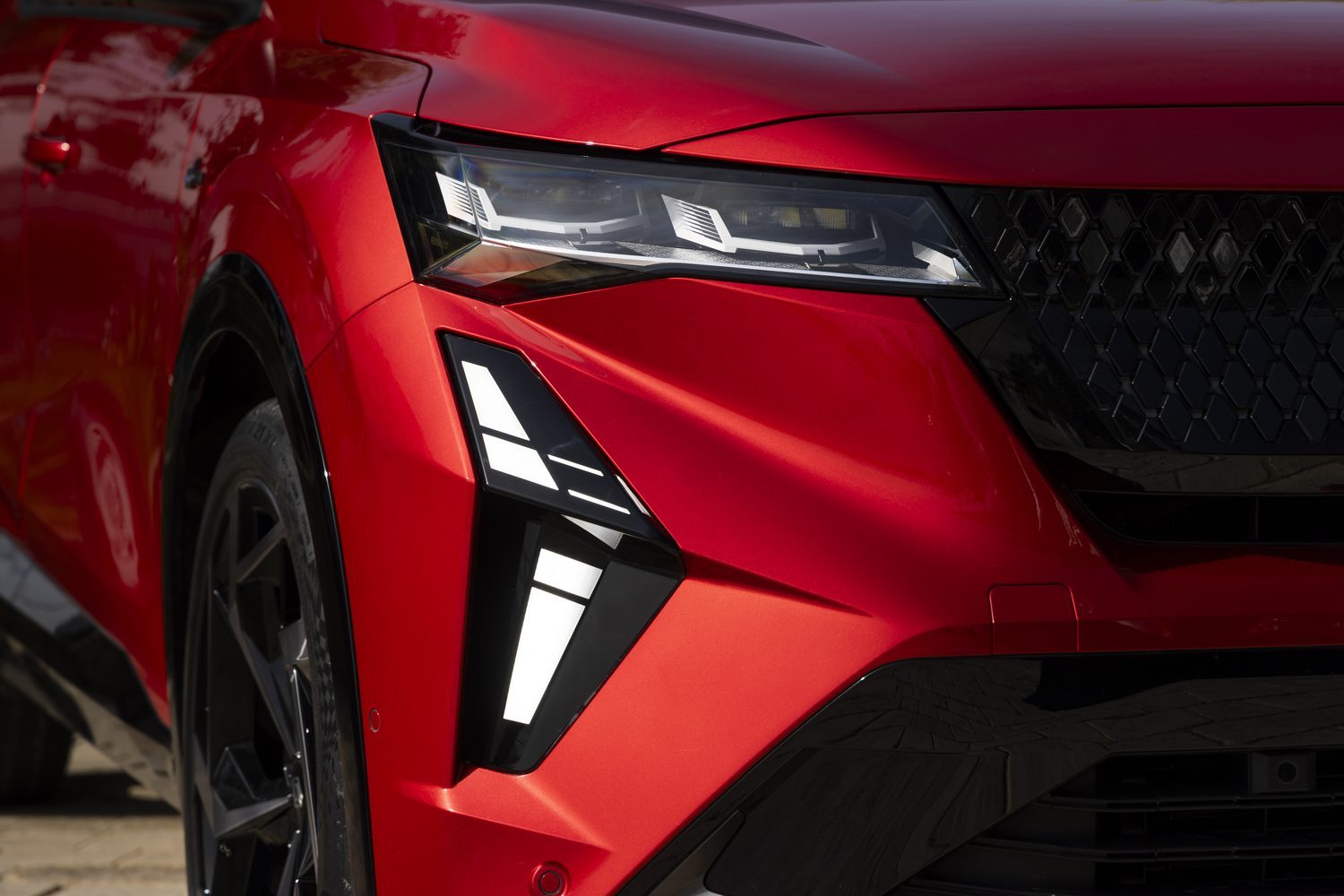
Not that that’s a problem, because the Rafale is a good-looking thing, even if there’s more than a hint of Peugeot 408 in the design. That’s because the same person penned the two French cars, and he did an excellent job with both. The Rafale has just enough Renault-specific gubbins to identify it, and it sees them grafted onto a sleek body. Some of the details are quite nice, too, such as the little aeroplane graphic in the back of the Solarbay glass roof fitted to top-specification cars. The tiny logo pays tribute to the 1930s racing aeroplane from which the Rafale takes its name.
A look inside the Renault Rafale E-Tech PHEV
Just as the plug-in Rafale looks much the same as the standard hybrid on the outside, the interior design is almost identical, too. You get the same combination of portrait-orientated touchscreen and digital instrument display, and you get the same steering wheel with a drive mode selector protruding from the hub.
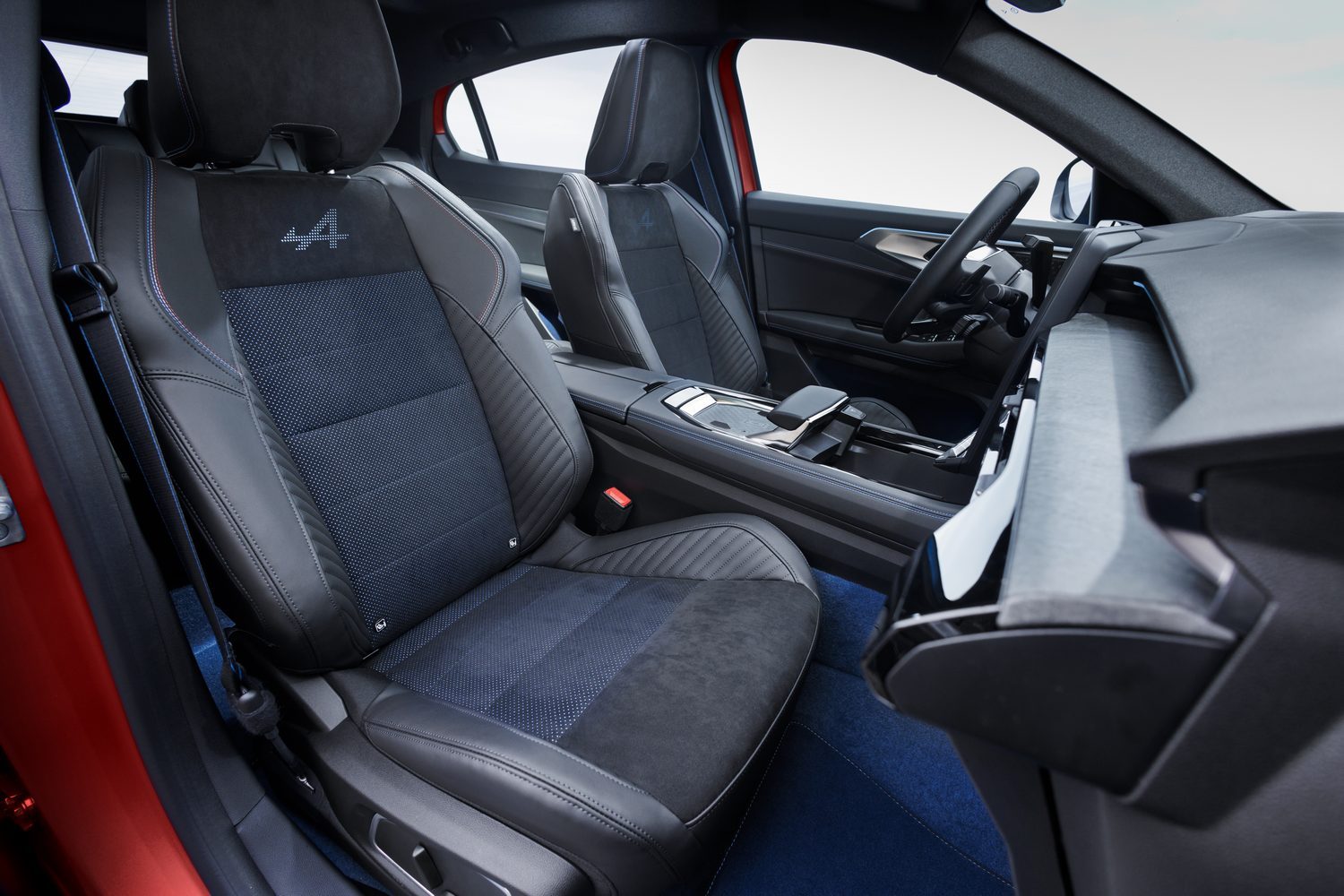
Style-wise, then, it’s very modern and quite smart, and quality is generally rather good, although there are one or two aspects that prevent the Rafale from feeling as polished as anything from Audi or BMW.
Just like the standard car, the plug-in hybrid gets the same mess of stalks sticking out from the steering column - on the right-hand side, you get the drive selector and some media controls, as well as the conventional wiper control stalk - but it makes up for that slightly with physical switchgear for the climate control system instead of relying solely on the touchscreen.
And it fights back with a huge amount of space. Often, plug-in hybrid versions of more conventionally powered cars can take a practicality hit because of the need to package bigger batteries, but the Rafale’s practicality credentials are not too drastically altered. Rear cabin space is just as generous as before, with acres of legroom and a surprising amount of headroom given the sloping roofline.
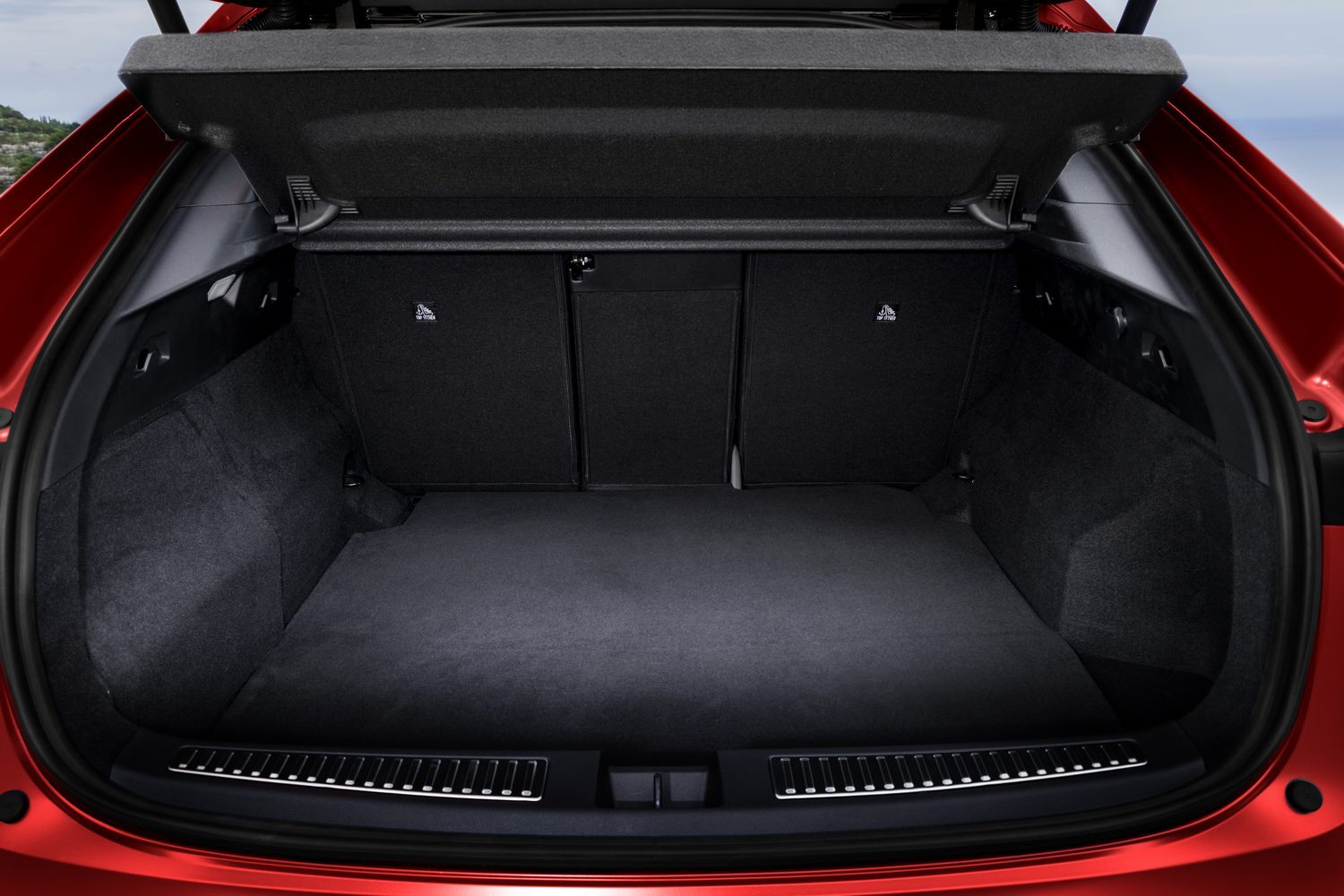
Officially, the 539-litre boot space has remained similar, too, but that volume is only measured to the false floor in the luggage bay. Below that, the plug-in hybrid has a little less capacity, but the overall penalty is not a serious one, especially as the Rafale’s boot was already larger than that of an Audi Q5 Sportback.
The Renault Rafale E-Tech PHEV’s on-board technology
With so few changes to the Rafale’s cabin, it should be no surprise to see that the on-board technology has not been altered either. Or, more accurately, it hasn’t been altered much. There are, of course, modifications to the displays pertaining to the new powertrain, but they’re generally subtle, and they don’t materially change what is a strong showing on the tech front.
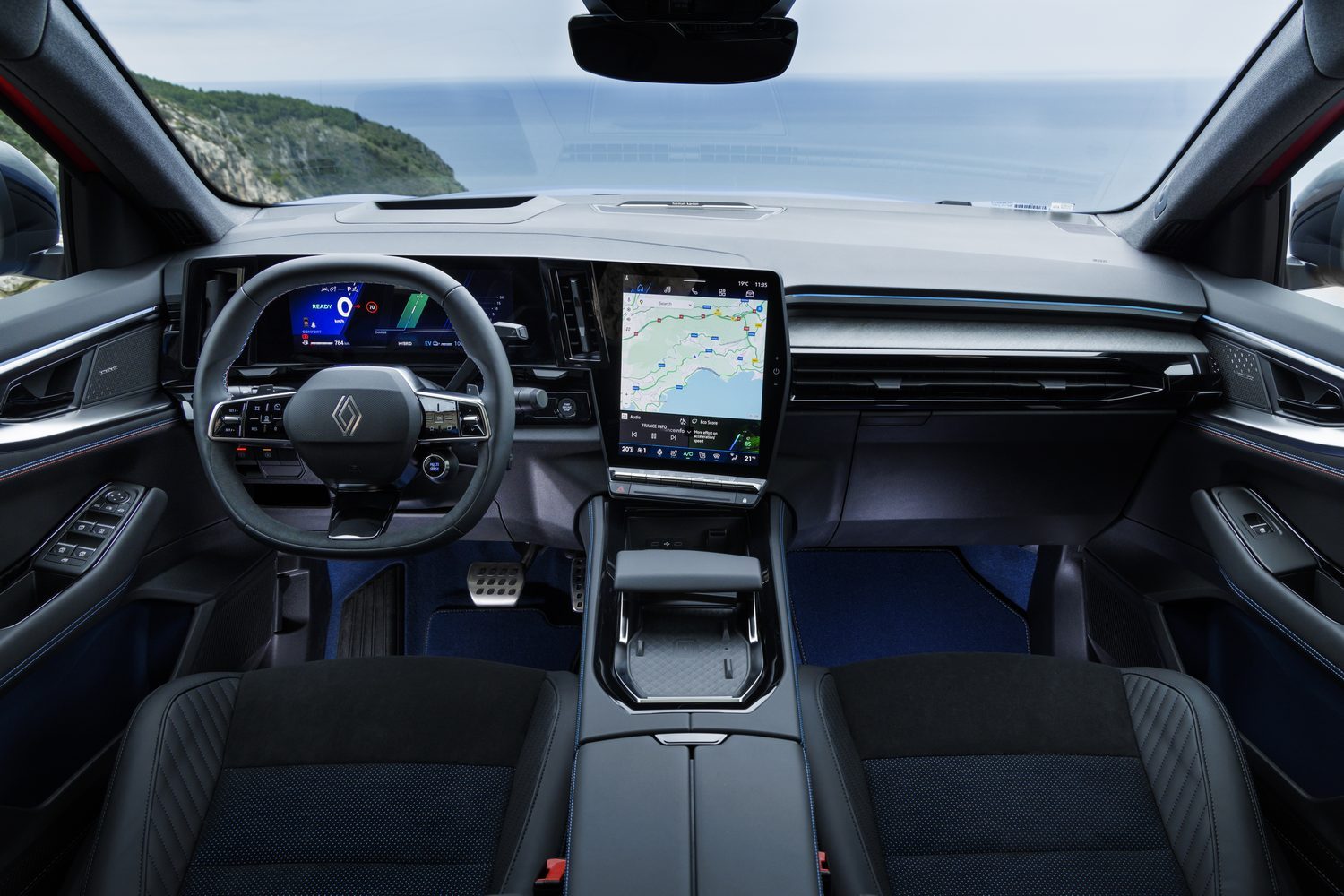
We’ve already extolled the virtues of the Rafale’s portrait touchscreen, which is powered by the same kind of operating system you get in an Android smartphone, and the digital instrument display has had its fair share of praise, too. Everything we said about the standard Rafale remains true of the new model, from the brilliance of the touchscreen to the clarity of the instrument cluster, while we’re also big fans of the Solarbay roof with its electric opacity adjustment system that makes the glass more or less translucent, removing the need for a space-sapping blind.
How efficient is the Renault Rafale E-Tech PHEV?
Although the modern methods of measuring fuel economy are better than they once were, they still have weaknesses, and plug-in hybrid powertrains really draw attention to them. Officially, the plug-in hybrid Rafale will burn just 0.7 litres of unleaded every 100km, which is outrageously low. Unbelievably low, some might say. We would put money on very few owners achieving anything like that in the real world, but that doesn’t mean the plug-in Rafale won’t be economical for those whose lifestyles suit its complicated plug-in hybrid system.
It’s based around much the same 1.2-litre turbocharged three-cylinder petrol engine as the standard Rafale, albeit with some modifications to make it more powerful, and it still has a complex six-speed automatic gearbox with an electric motor built in. But from there, things diverge slightly. Renault has also fitted a rechargeable 22kWh battery pack and two more electric motors, taking the total to three.
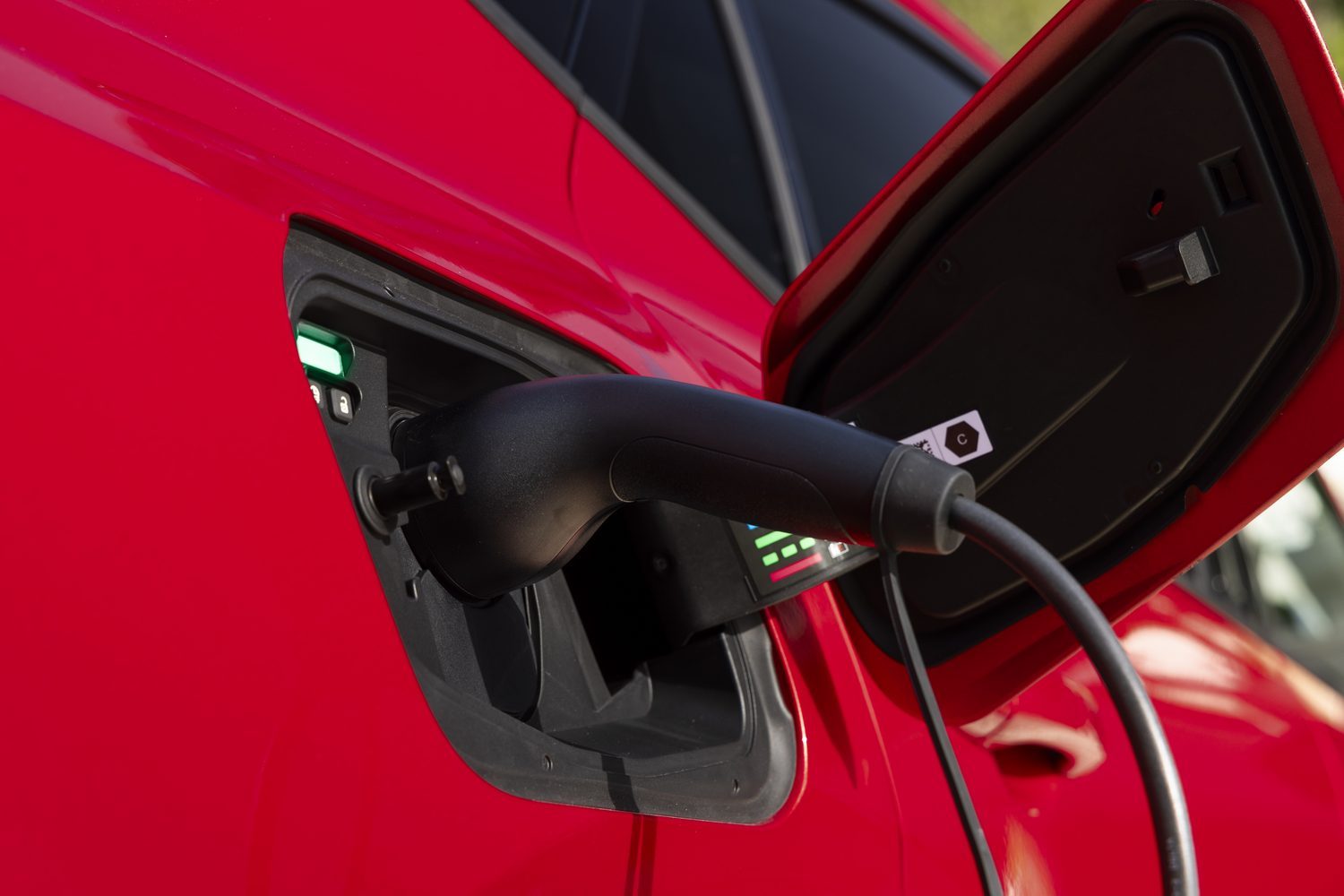
That means the car can drive purely on electric power for more than 100km, which will be enough for most people to go about their day-to-day business without once calling on the 1.2-litre petrol engine. In fact, if you can charge regularly at home, you may not burn very much fuel at all unless you head off on a longer drive. And even if you do, the consumption will not be eye-watering thanks to the efficiency of the system.
Perhaps more importantly for some, though, the ultra-low CO2 emissions ensure the Rafale will appeal to company car drivers as the highest figure this version emits is 17g/km.
But Renault would say performance is an equally large part of what the plug-in Rafale does, and the 300hp output is definitely an upgrade on the 200hp you get from the standard Rafale. The more powerful car gets all-wheel-drive traction, too, and the combination means the car is noticeably faster.
Yet the statistics will not tell you that it’s more refined, too. We didn’t have a great problem with the Rafale’s ultra-efficient hybrid powertrain before, but the new plug-in hybrid is even better, with more refinement and polish, perhaps because it just doesn’t need to work as hard most of the time. But even if you do put your foot down and the engine kicks in, the sound of the three-cylinder engine at work is not an unpleasant one.
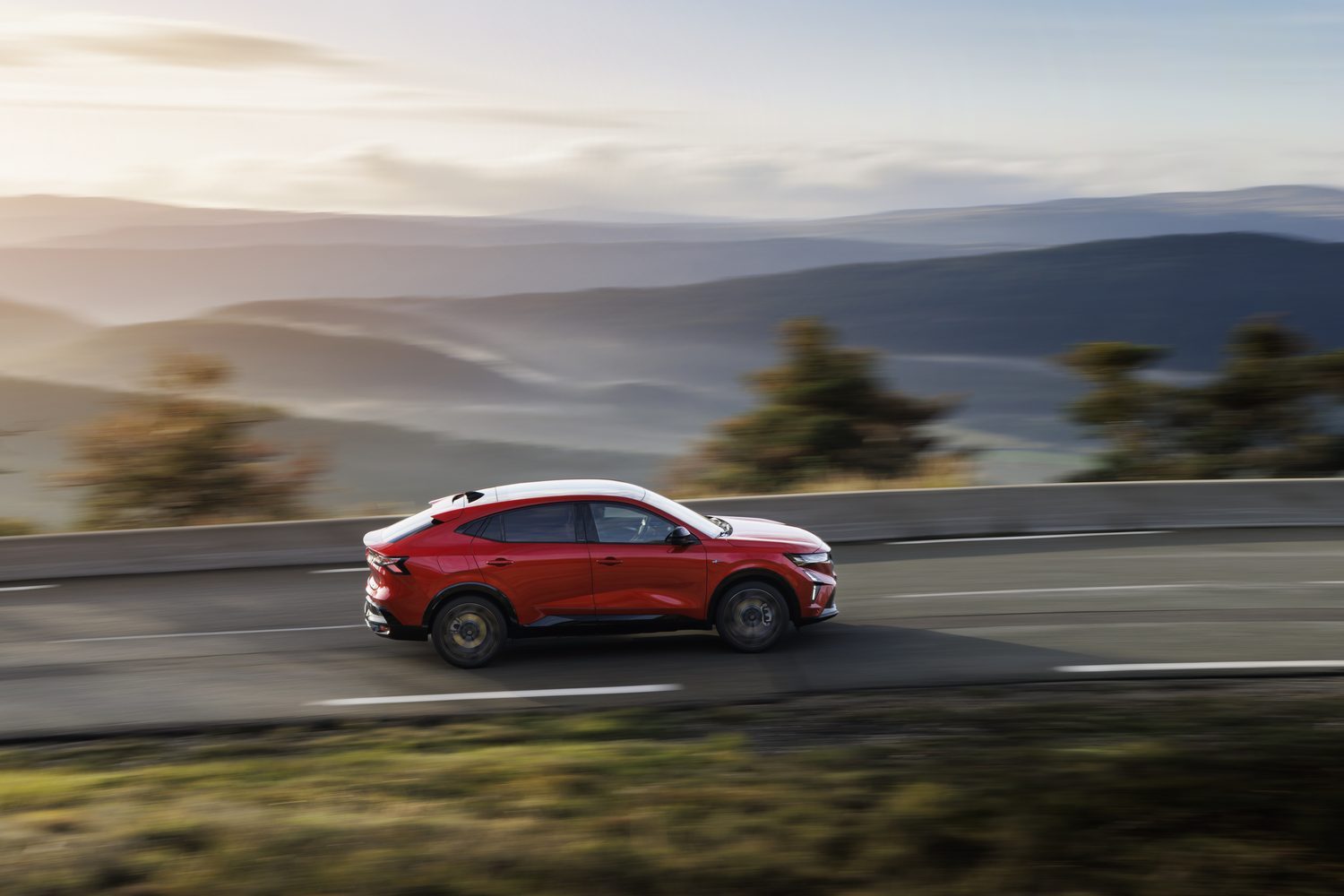
Driving the Renault Rafale E-Tech PHEV
The new propulsion system is not the only change Renault has made to create the plug-in Rafale, which has also received some chassis upgrades. But confusingly, these upgrades only apply to the range-topping Atelier Alpine model tested here.
Apparently, this version of the Rafale has been fettled by Renault’s sibling firm Alpine - makers of the A110 the lively new A290 electric hot hatchback - to make it both more comfortable and more dynamic. You might consider those things naturally opposed, but Renault and Alpine have tried to increase the Rafale’s bandwidth, with greater comfort in the more everyday settings and more control and stability in sportier modes.
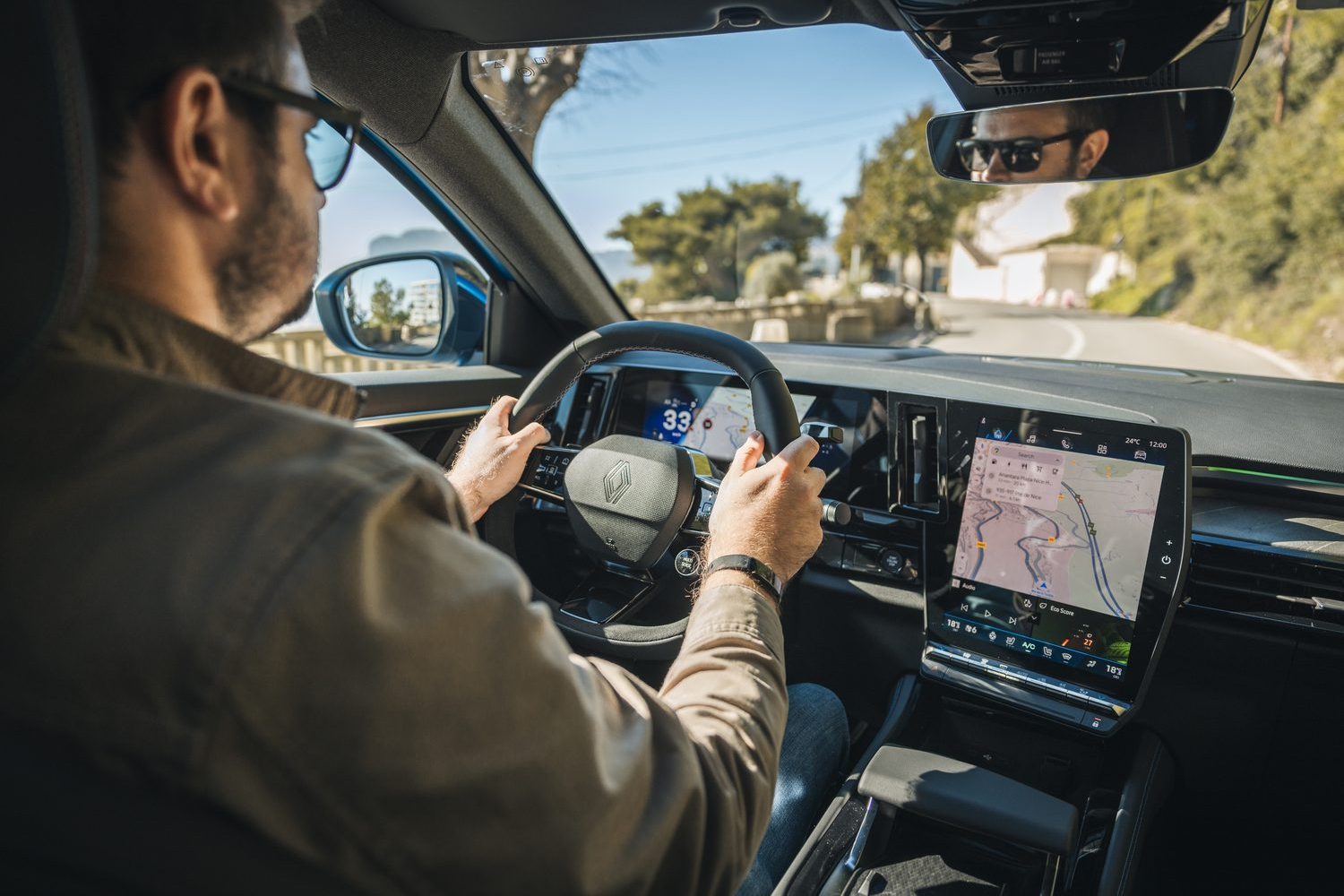
Let’s start with the setting you’ll use every day: Comfort. In this mode, the Rafale activates a camera that scans the road ahead and sets up the suspension, accordingly, allowing the car to adjust to the surface. At least in theory. The system manages to over-soften the suspension slightly so it feels as though you bob about gently, almost like a small boat. It’s as though the idea was good, but the engineers forgot some body control would still be welcome.
The sportier settings never really deliver much more in the way of dynamism, despite their billing. The car definitely feels more robustly controlled in those settings, and there’s a bit more weight to the steering, but it still feels every bit as inert as the standard Rafale. It never encourages you to grab it by the scruff of the neck.
That said, Renault does seem to have sorted out its four-wheel-steering system, which was previously overly sensitive in the Rafale and Austral hybrids. Now, the sharpness seems to have been sanded down, and while you can still feel the system at work in tight spots, it doesn’t dominate the experience. There’s still no deep sense of driver involvement and engagement, though, so while the Rafale feels quite content and stable when you start to drive faster, it won’t be a replacement for a sports coupe in its owner’s affections.
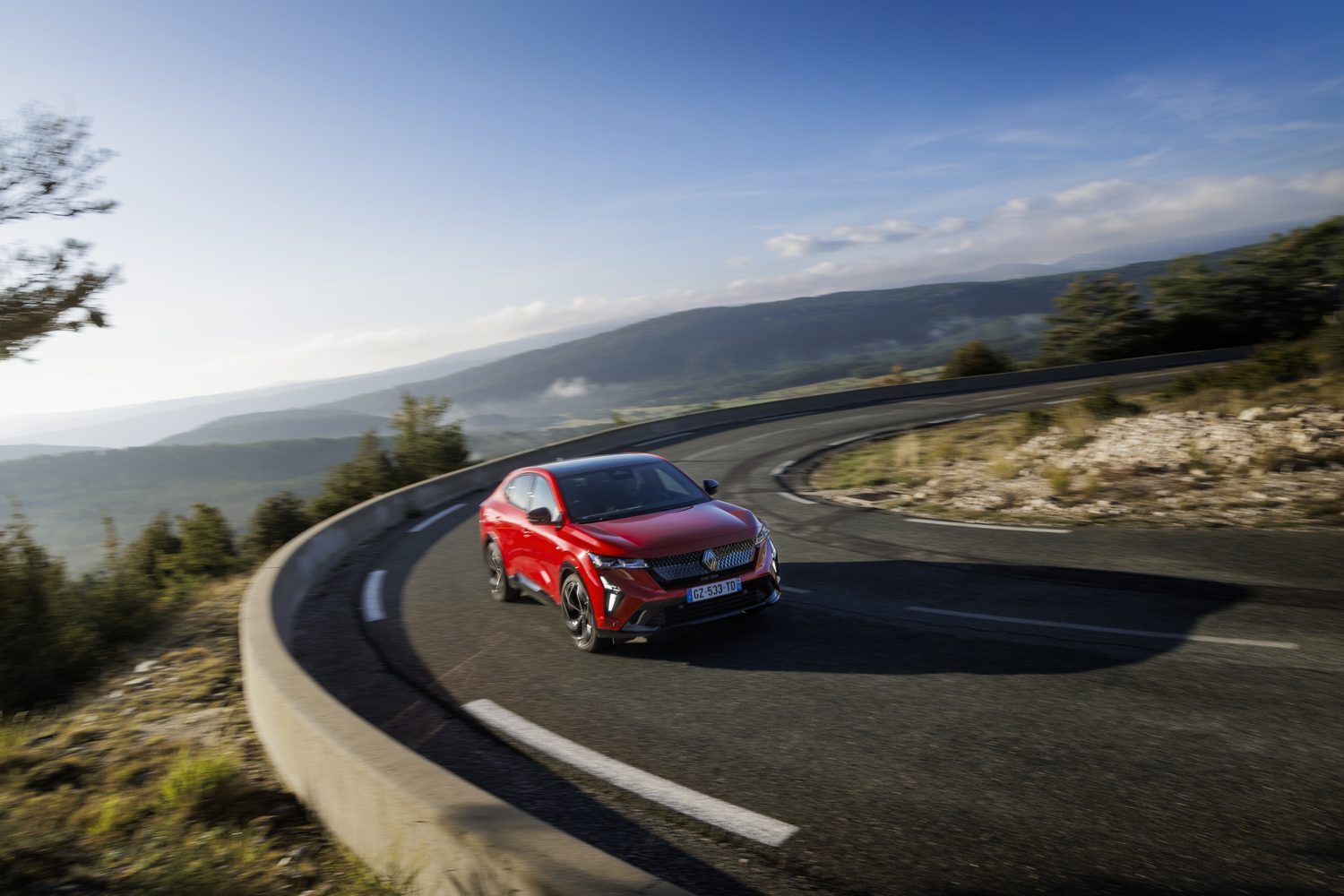
Still, that isn’t really the Rafale’s homeland, and it proves a little more convincing in town and on the motorway. Sure, the ride still isn’t that impressive at low speeds - you get the sense a combination of weight and big wheels hold it back - but it never feels uncomfortably brittle, and it definitely settles at motorway speeds.
How safe is the Renault Rafale?
The Rafale received a very commendable five-star rating when it was assessed by the European safety organisation, Euro NCAP. With solid scores across the board, but particularly for occupant protection and safety assistance technology, it’s the latest in a string of Renault products to perform admirably in the crash-test environment - something on which Renault has placed quite a bit of emphasis in the past 20 years or so.
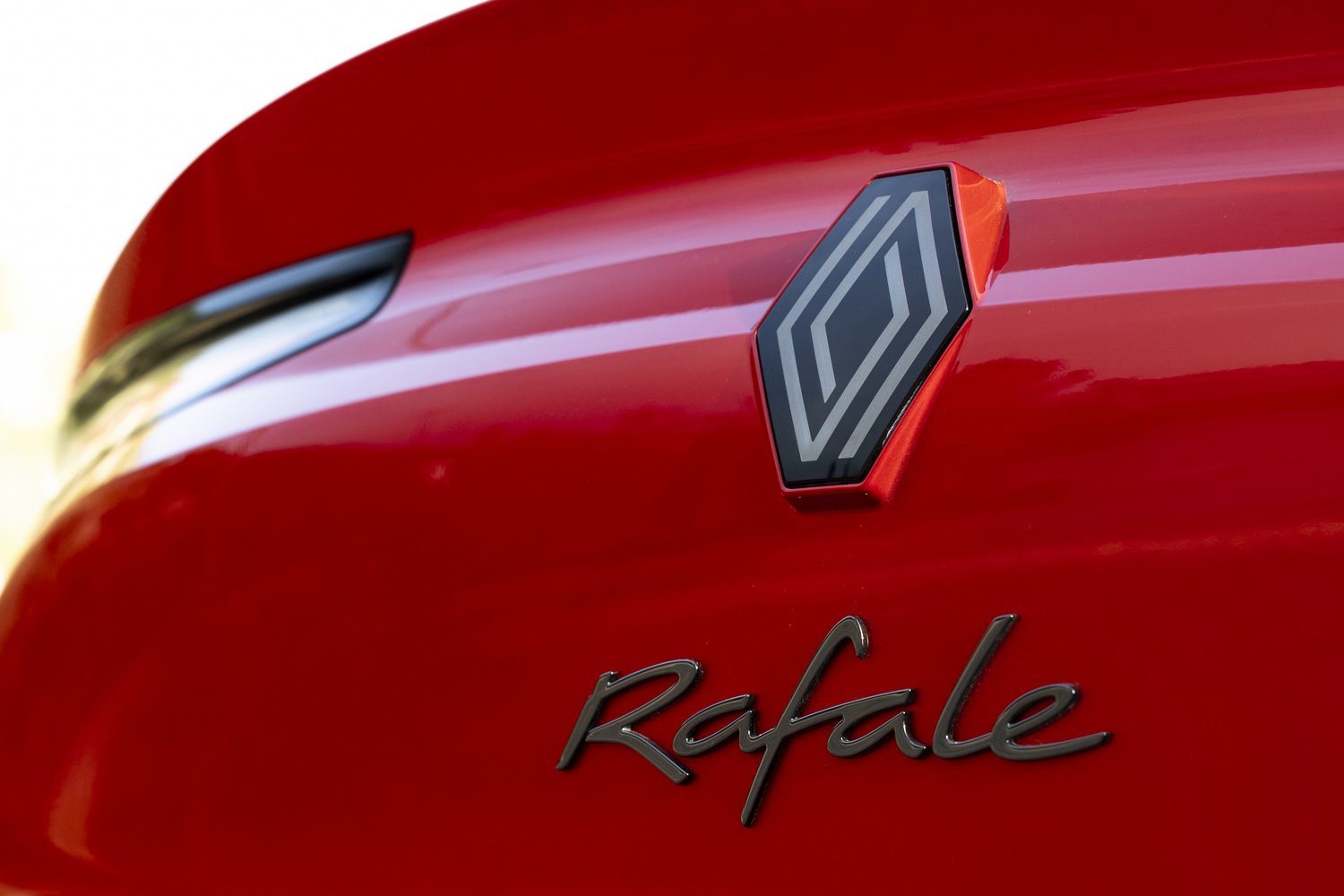
But where that used to mean filling cars with airbags and building in crumple zones, it now means there’s a lot of driver assistance technology on board, helping you to stay out of harm’s way. Autonomous emergency braking is standard, along with lane departure warning and a rear-view camera to help prevent low-speed parking mishaps.
Some of the tech, as in all modern cars, can get irritating in certain situations, so Renault has built in a little button that allows you to save the settings you like, then access them when you get in the car. In a world where so many underwhelming ‘safety’ features have to be enabled by law when the car is started, the feature is a really clever idea.
How many child seats can you fit in a Renault Rafale?
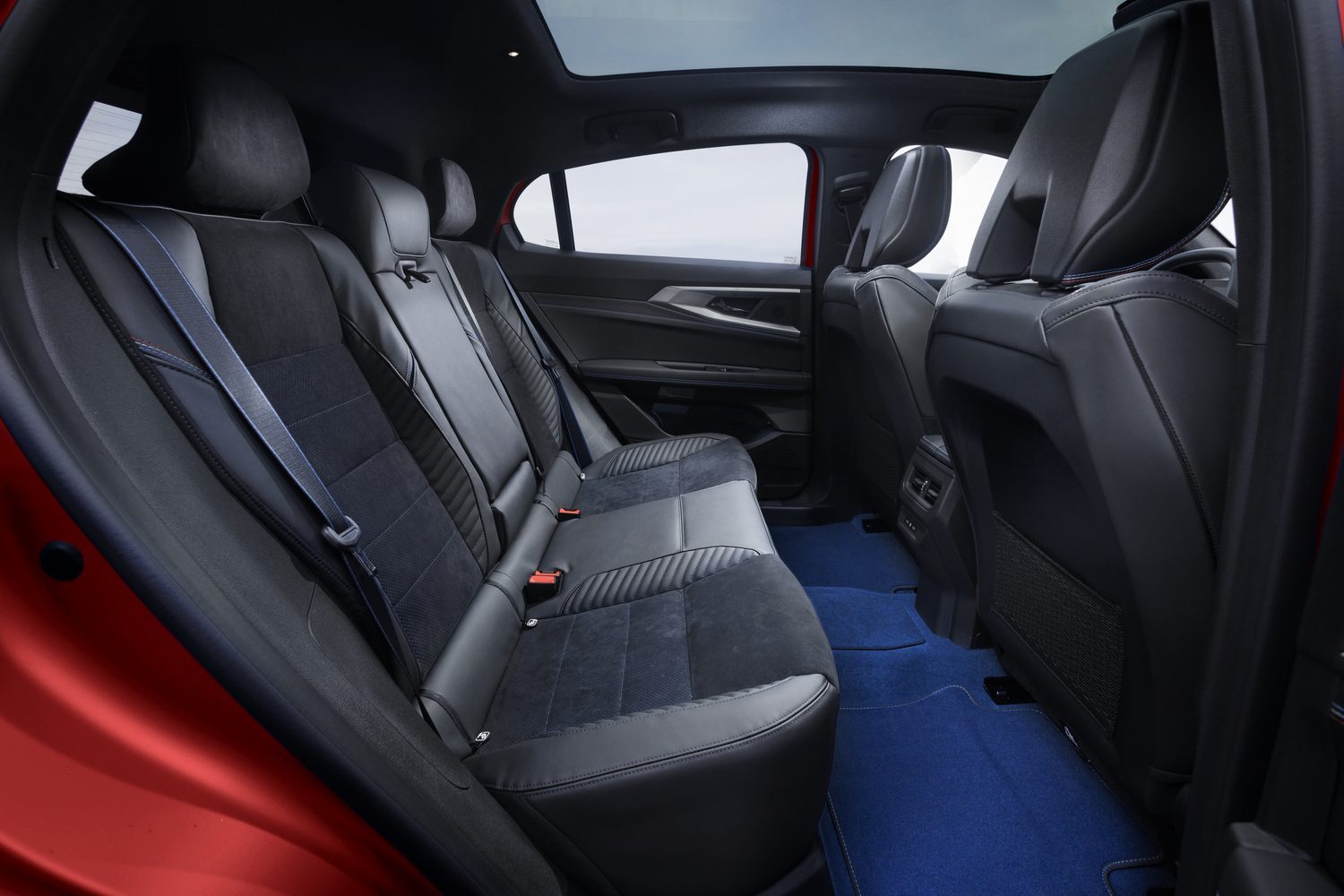
With ISOFIX child seat mounting points on both of the two outermost rear seats, the Rafale has plenty of capacity for child seats, which only adds to its family car credentials. Admittedly, it doesn’t quite have the flexibility of some rivals, which have another ISOFIX mounting point in the front passenger seat, but that will only be a sticking point for some owners, as many use seatbelts instead of ISOFIX anyway.
How much does the Renault Rafale E-Tech PHEV cost in Ireland?
The 200hp Renault Rafale hybrid starts at €51,495, which at first makes the 300hp PHEV’s starting price of €59,595 seem like a big jump. However, the plug-in model isn’t offered in the entry-level Techno specification, so it’s best compared with the Esprit Alpine variant, costing €55,695. A premium of less than €4,000 for 50 per cent more power, plug-in capability and all-wheel drive seems reasonable to us, though we’re not convinced that the range-topping Atelier Alpine version with its unique suspension is worth the step up to €63,995.
The reasons you’d buy a Renault Rafale E-Tech PHEV
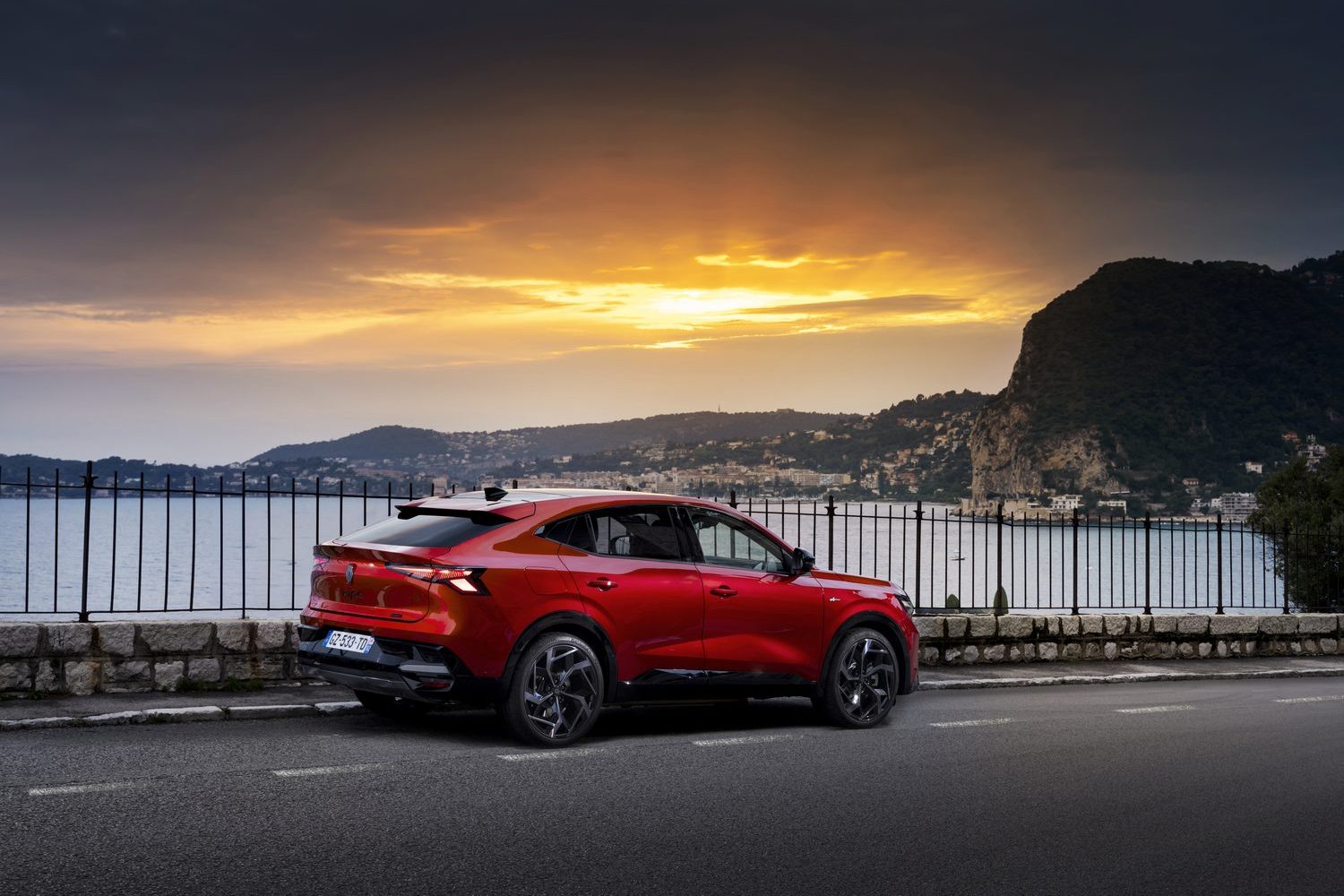
Changes to the suspension for the Atelier Alpine version didn’t strike us as particularly successful in this first drive of the new plug-in hybrid Rafale, but there’s a lot to like about the 300hp model all the same. The plug-in powertrain is better than that of the standard hybrid, so the more powerful Rafale undoubtedly manages to increase the car’s appeal.
Ask us anything about the Renault Rafale E-Tech PHEV
If there’s anything else you’d like to know about the Renault Rafale - either in 200hp or 300hp forms - or any other car on sale in Ireland, why not take advantage of our Ask Us Anything page? Post your question and our experts will set to work answering, giving you the information you need to pick your next car. Better still, it’s completely free of charge.

